Catamarans: A Complete Guide to Multihull Boats
Catamarans have been a part of sailing history for centuries and continue to be popular for their stability, spaciousness, and performance. Developed by various cultures around the world, the principles of catamaran design have evolved over time to become optimized for both pleasure cruising and racing. This complete guide will help you understand the essentials of catamarans, their unique characteristics, and how to choose the right one for your needs.

From the basic concepts of multihull design, performance, and handling, we will explore the advantages and benefits of a catamaran in terms of safety and comfort on board.
Along the way, we will discuss maintenance considerations, distinctive catamaran brands and models, and how a catamaran lifestyle can compare to more traditional sailing options .
Finally, we will provide learning resources and frequently asked questions tailored to both seasoned sailors and newcomers to the world of catamarans.

Key Takeaways
- Catamarans are known for their stability, spaciousness, and performance
- This guide covers aspects like design, handling, safety, and choosing the right catamaran
- Resources and frequently asked questions provide additional insights for potential catamaran owners
Understanding Catamarans
Design Characteristics
Catamarans are known for their unique design, which features two parallel hulls connected by a deck. This design provides several advantages over traditional monohull boats, such as stability and speed.
With their wide beam, catamarans have a reduced risk of capsizing and can access shallow waters due to their shallow drafts 1 .
One of the notable aspects of a catamaran is its twin hulls, which offer increased living space and comfort compared to a monohull. Additionally, catamarans are often favored by recreational and competitive sailors for their excellent maneuverability 2 .
The materials used for constructing catamarans range from wood to fiberglass, and even aluminum for high-performance vessels. Aluminum catamarans are known for their strength, lightweight structure, and resistance to corrosion 3 .
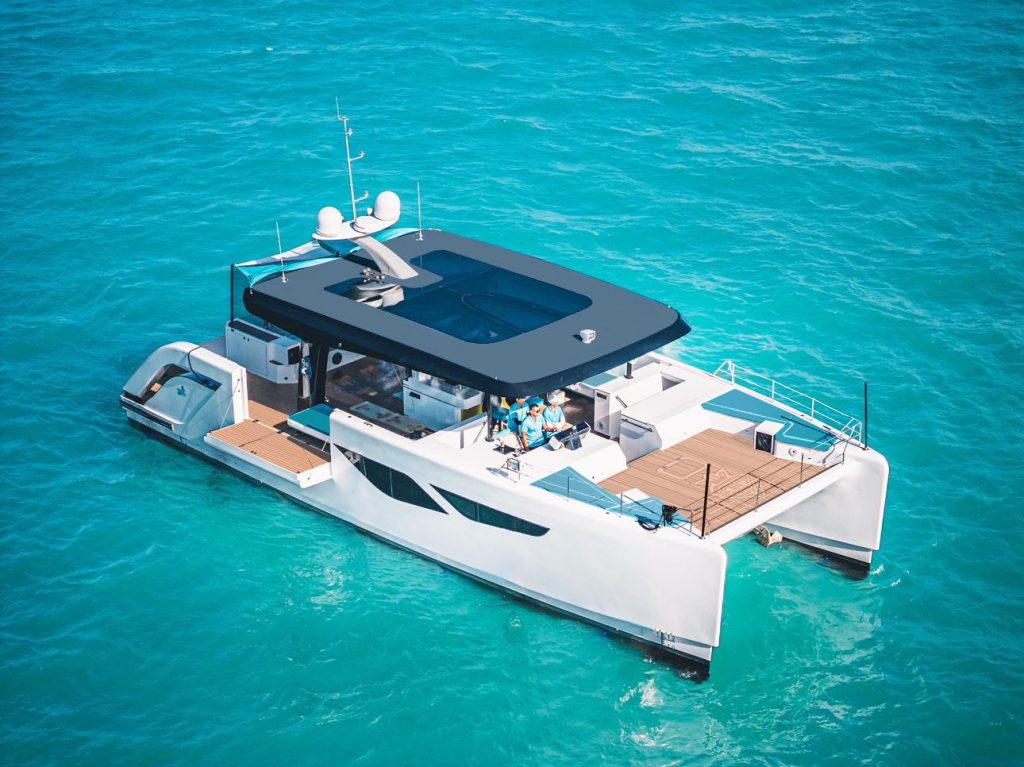
Hulls and Construction
The hulls in a catamaran are crucial to its stability and performance. These hulls help distribute the weight evenly across the water surface, minimizing drag and allowing for smoother sailing.
In general, the hulls can be categorized into two types:
- Symmetrical Hulls : The hull shape is similar on both sides, which enhances balance and stability in various sailing conditions.
- Asymmetrical Hulls : One side of the hull is designed differently than the other, which can be advantageous when sailing upwind.
The construction materials used in building catamaran hulls also play a vital role in the boat's performance and durability. Common materials include:
- Fiberglass : A popular choice due to its lightweight, strength, and ease of maintenance.
- Wood : Traditional material that offers a classic look, but requires more maintenance than fiberglass or aluminum.
- Aluminum : Lightweight and strong, aluminum is an excellent choice for high-performance catamarans 4 .
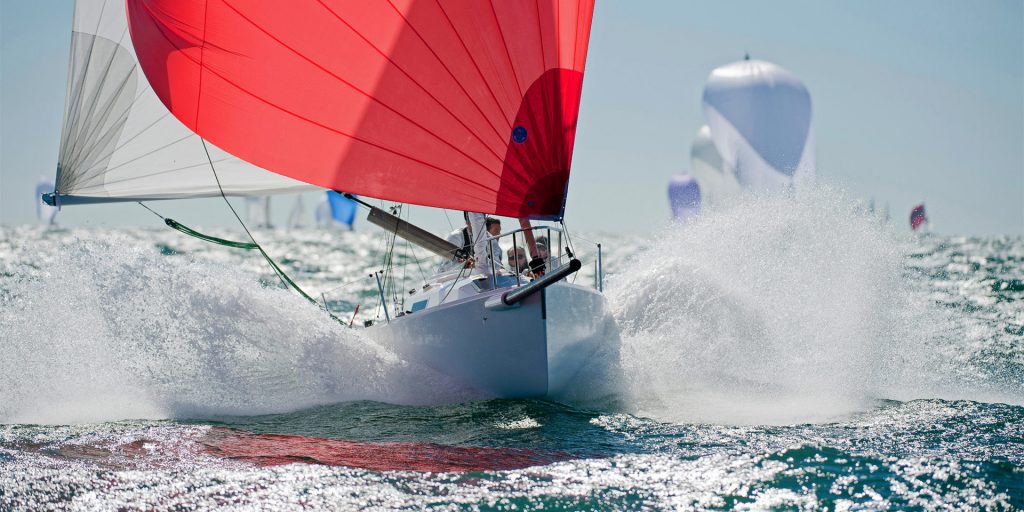
Multihulls vs Monohulls
There's often a debate between the benefits of multihull boats, such as catamarans or trimarans, and monohull boats. Here are some key differences between the two:
- Stability : Due to their wide beam and reduced heeling, catamarans offer improved stability compared to monohulls. This makes them an attractive option for those who want to avoid seasickness or feel more comfortable on the water 5 .
- Speed : Multihull boats are known for their speed, which results from their ability to minimize drag and maintain a level sail.
- Living Space : Catamarans and other multihulls generally have more living space, as both the hulls and the connecting deck can be utilized for accommodation and storage.
- Maneuverability : While monohulls are known for their agility and ability to point close to the wind, catamarans can still offer exceptional maneuverability when properly sailed 6 .
Performance and Handling
Speed and Efficiency
Power catamarans have gained popularity for offering a unique combination of speed, efficiency, and stability. Their dual-hull design allows for less water resistance, which directly translates to higher speeds and better fuel efficiency compared to traditional monohull boats.
In addition, the wide beam provided by the two hulls ensures a stable ride even at higher speeds. This makes power catamarans ideal for cruising, fishing, and watersports ( Boating Beast ).
Sailing Dynamics
When it comes to sailing catamarans , the performance is affected by factors such as keel, rudders, mast, and sails.
Their wide beam and dual-hull design provide inherent stability and reduced heeling effect, making them less likely to capsize compared to monohulls.
I should also note that catamarans have a shallow draft, which gives them the ability to access shallow waters that may be off-limits to other boats ( Navigating the Waters ).
In my experience, the lighter weight of a catamaran and its aerodynamic design can contribute to remarkable sailing performance under different wind conditions.
The larger sail area relative to hull weight allows them to harness more wind power, further enhancing their speed and agility on the water.
Maneuvering and Docking
Maneuvering and docking a power catamaran involves understanding its unique handling characteristics.
The presence of two engines in separate hulls allows for more precise control in confined spaces such as marinas.
The maneuverability of these boats is typically improved by the use of dual rudders that are located close to each powered hull for efficient steering ( BoatUS ).
When docking under power, I find it helpful to carefully assess the wind and current conditions beforehand.
This is because catamarans can be more sensitive to windage due to their larger surface area above the waterline.
By understanding how these forces may affect the boat, I can make adjustments to my approach and successfully dock the catamaran without any incidents.
Safety and Comfort on Board
Safety Features
Safety is a top priority when sailing any type of vessel, including catamarans. A well-built catamaran offers several features aimed at ensuring the safety of those onboard.
First, catamarans have inherent stability due to their wide beam and twin hull design . This makes them less prone to capsizing than monohull boats. This stability allows me to confidently navigate various water conditions .
In addition to stability, catamarans are designed with positive buoyancy, making them almost unsinkable . Of course, safety equipment such as lifejackets, flares, and first aid kits should always be onboard and well-maintained.
Furthermore, you should also stay updated on weather conditions, avoid sailing in high-risk areas, and learn your boat's safe sail limits.
Living Spaces and Comfort
When it comes to living spaces, I value comfort and practicality as essential features for my time on the water. Catamarans offer a unique advantage in this regard, as their dual hulls create spacious living areas.
Most catamarans are designed with separate cabins in each hull, allowing for privacy and comfort when sleeping. Additionally, these boats typically feature shallow drafts , which means I can access shallow waters and anchor close to shore.
The main living area, or salon, is situated on the bridge deck between the hulls. It usually includes a seating area, a dining table, and a galley (kitchen). Large windows provide ample natural light and panoramic views, making the space feel open and bright. Some catamarans even have the option for an additional living area on the upper deck where you can enjoy the sun and breeze.
One aspect of catamaran living I truly appreciate is the ample storage available. Each cabin typically has built-in storage spaces for clothes, gear, and personal items. There are also designated areas for equipment such as spare sails, tools, and water toys. This makes it easy for me to keep my belongings organized and make the most of my time on the water.
Maintaining a Catamaran
Routine Maintenance
In order to keep my catamaran in the best possible shape, I make sure to perform routine maintenance tasks. These tasks are essential to extend the life of the components and ensure smooth sailing:
- Cleaning : Regularly cleaning the deck, hulls, and sails prevents buildup of dirt, algae, and other debris that could affect performance.
- Inspection : Periodically inspecting my catamaran allows me to detect any potential issues before they become significant problems. I pay close attention to the rigging, sails, and lines on my boat.
- Lubrication : Keeping all moving parts lubricated is vital to prevent friction and wear on components such as winches and pulleys.
- Antifouling : Applying antifouling paint to the hulls of my catamaran helps prevent the growth of marine organisms that can damage the boat and reduce its speed. Make sure to do this at least once a year.
Dealing with Wear and Tear
Despite my best efforts to keep my catamaran well-maintained, wear and tear is inevitable. Here's how I deal with common issues that could arise from regular use:
- Repairs : When I notice signs of wear on sails, lines, or rigging components, I make it a priority to repair or replace them promptly. Neglecting these issues can lead to more significant problems and affect the boat's performance.
- Hull maintenance : If I find dents, scratches, or stiff rudders on my catamaran's hulls, I address them immediately. Repairing any damage not only ensures smooth sailing but also prevents further issues from developing.
- Sail care : Over time, my sails can become stretched, torn, or damaged due to exposure to sun, wind, and saltwater. Regularly inspecting them for signs of wear and making any necessary repairs or replacements helps maintain optimal performance.
- Rust and corrosion prevention : Since my catamaran is made of various metal components, I need to protect them from rust and corrosion. I routinely check for signs of corrosion and apply anti-corrosive treatments when needed.
Catamaran Brands and Models
High-Performance Models
In recent years, there has been a growing interest in high-performance catamarans. I have seen a variety of brands and models that have impressed me with their performance capabilities. One notable brand is Fountaine Pajot , which has a long history of producing a range of sailing catamarans and power catamarans. Some of their popular models include the Tanna 47 and the Bali 4.4 .
Another high-performance catamaran I've come across is the Leopard 40 . Known for their speed and exceptional handling in various conditions, the Leopard brand started with sailing catamarans and has since expanded to include power catamarans. Their models range from 40 to 53 feet long, offering both power and luxury for those looking for a thrilling experience on the water.
Cruising Catamarans
When it comes to cruising catamarans, the Lagoon brand is synonymous with luxury and comfort. With a range of sailing catamarans from 40 to 70 feet long, Lagoon offers spacious catamarans for extended bluewater cruising. Their 60- and 70-foot power catamarans are equally impressive, providing ample living space and smooth sailing experiences.
I've also found the Aquila 42 PC to be a remarkable cruising catamaran. With a focus on design and innovation, Aquila has produced catamarans perfect for exploring the open sea with friends and family. Their spacious, stable designs allow for a more enjoyable and serene journey, ensuring you arrive at your destination comfortably.
The Catamaran Lifestyle
Anchoring and Cruising
I find catamarans to be a fantastic choice for cruising and anchoring , which is a critical part of living the catamaran lifestyle . Catamarans have several advantages when it comes to anchoring and cruising, such as:
- Stability : Due to their wide beam and twin hulls, catamarans remain stable during anchoring, which reduces the risk of seasickness.
- Shallow draft : Thanks to their shallow draft , catamarans can anchor close to shore, enabling better access to protected coves and more beautiful beaches.
- Speed : Despite their large size for cruising vessels , catamarans are generally faster than monohulls. This is a result of their slim hulls and reduced water resistance.
When it comes to anchoring, catamarans can make use of their shallow draft to anchor in locations that other boats cannot. This allows for a greater range of cruising spots, which makes the overall experience much more enjoyable and unique.
Living on a Catamaran Full-time
For many catamaran enthusiasts, the dream of living full-time on a catamaran is entirely possible. While not without challenges, there are several factors that make living aboard a catamaran an enjoyable experience:
- Spacious living areas : Catamarans generally have more living area compared to monohulls, providing ample space for the whole crew.
- Privacy : The separate hulls allow for private cabins, ensuring that everyone on board has their space.
- Stability : As mentioned earlier, catamarans are stable vessels, making living on them more comfortable than monohulls.
Choosing Your Catamaran
Comparing Models and Features
When I start to look for the perfect catamaran, the first thing I focus on is comparing various models and features .
I determine the key factors that are essential for my needs, such as size, passenger comfort, and performance. By doing so, I can identify which catamaran models are most suitable for me.
For example, if I plan to sail with a large group, I would look for a catamaran that offers ample space both inside and out.
To help me with my comparisons, I usually create a table or list of the different models and their features:
| Model | Size | Comfort | Performance |
|---|---|---|---|
| A | 40ft | Spacious | High |
| B | 35ft | Average | Average |
| C | 45ft | Luxury | High |
This visual aid makes it easier for me to sort the options and prioritize my considerations, such as price, yacht type, and brand.
New vs. Second-Hand
Another critical aspect of choosing a catamaran is deciding between a new or second-hand boat.
Both options have their pros and cons, and ultimately it depends on my preferences and budget.
If I can afford a new catamaran, I get the advantage of the latest design , features, and technology. Plus, I typically receive better warranty coverage and support from the manufacturer.
However, new catamarans are more expensive and can have long wait times due to high demand.
On the other hand, purchasing a second-hand catamaran can save me a significant amount of money, and I might find a high-quality boat with low mileage or well-maintained by the previous owner.
However, this option carries more risks, as I need to be knowledgeable about potential maintenance issues and conduct a thorough inspection before purchase.
Learning Resources
Books and Manuals
When it comes to learning about catamarans, there are plenty of books and manuals available.
One of the highly recommended books is Multihull Voyaging by Thomas Firth Jones. This book provides a comprehensive understanding of multihulls, including catamarans, and is an essential guide for any beginner sailor.
Another great book to check out is Catamarans: The Complete Guide for Cruising Sailors by Gregor Tarjan.
With a foreword by Charles K. Chiodi, publisher of Multihulls Magazine, this book covers all aspects of cruising catamarans. It includes detailed information on design, construction, and maintenance, as well as tips and tricks for sailing a catamaran.
Here are a few more books that I find valuable:
- The Catamaran Book by Tim Bartlett, an excellent resource for both beginners and experienced sailors
- Catamaran Sailing: From Start to Finish by Phil Berman and Lenny Rudow, a comprehensive guide to both catamaran racing and cruising
Online Content and Photography
In addition to books, you can find plenty of online content and photography about catamarans.
Websites like Sailaway Blog and Boating Guide offer tips, techniques, and how-to articles for sailing catamarans.
Many of these sites also include stunning photography, showcasing these beautiful vessels in action.
For those who prefer Kindle or e-books, many of these resources are available in digital format.
This makes it easier for you to access them anytime, anywhere, allowing you to keep learning and improving your catamaran sailing skills.
To further enhance your knowledge, you can also join online forums and communities dedicated to catamarans.
These platforms provide invaluable advice and first-hand experiences shared by fellow sailors, as well as recommendations for additional learning resources.
Frequently Asked Questions
What factors should be considered when choosing a catamaran for full-time living?
When choosing a catamaran for full-time living, consider its space and layout , as it will become your home.
Look for a design with a comfortable living area , ample storage, and sufficient berths for the number of people living aboard.
Also, consider fuel efficiency , ease of maintenance, and the catamaran's cruising range .
Lastly, the overall cost of ownership , including insurance and mooring fees, should be considered.
How do catamarans perform in rough sea conditions?
In general, catamarans are known for their stability, which is primarily due to their wide beams. This makes them less prone to capsizing when compared to monohulls.
However, their performance in rough sea conditions will depend on the specific model and design of the catamaran. Some may perform better in certain conditions than others, so researching and selecting the right design is essential.
What are the key differences between sailing a catamaran and a monohull?
One of the main differences between catamarans and monohulls is stability.
Catamarans have a wider beam , which makes them more stable and minimizes the risk of capsizing.
They also have shallower drafts, which allow them to access more shallow waters compared to monohulls.
Additionally, catamarans often have larger living spaces, making them more comfortable and suitable for cruising and full-time living.
What are the advantages of catamarans for long-distance cruising?
Catamarans offer several advantages for long-distance cruising.
Their wide, stable design provides a comfortable ride and reduces the risk of seasickness.
They can also attain higher speeds due to their reduced drag and generally sail faster than monohulls on certain points of sail.
The shallow draft allows them to explore more coastal areas and anchor closer to shore. Lastly, their spacious interiors make them ideal for extended cruises and living aboard.
How does one assess the value of a used catamaran on the market?
Assessing the value of a used catamaran requires thorough research and inspection.
Start by comparing the age, model, and condition of the catamaran to similar listings on the market.
Take note of any upgrades or additions made to the boat, as these can affect the price.
It's essential to inspect the boat in person or hire a professional surveyor to ensure there are no hidden issues that could affect its value.
What essential features should be looked for in a catamaran intended for ocean voyages?
For ocean voyages, look for a catamaran with a strong, well-built hull designed to handle rough conditions.
Safety features such as liferafts, adequate flotation, and sturdy deck hardware are crucial.
A reliable engine and well-maintained rigging and sails are also essential.
In terms of living space, opt for a catamaran with a comfortable, spacious interior and ample storage.
Last but not least, good navigation and communication systems are necessary for long-distance ocean voyages.
Related Articles
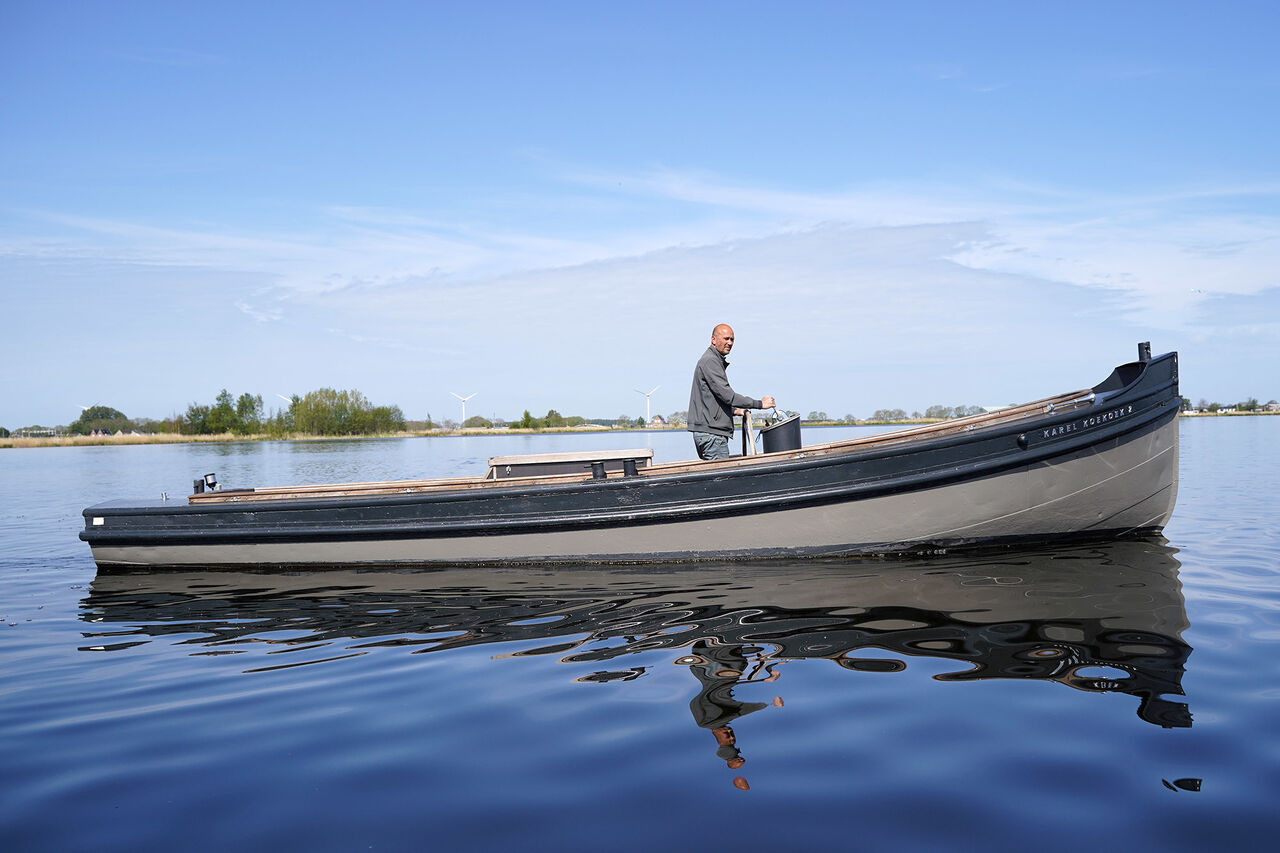
Sloep Boats: A Comprehensive Guide for Enthusiasts
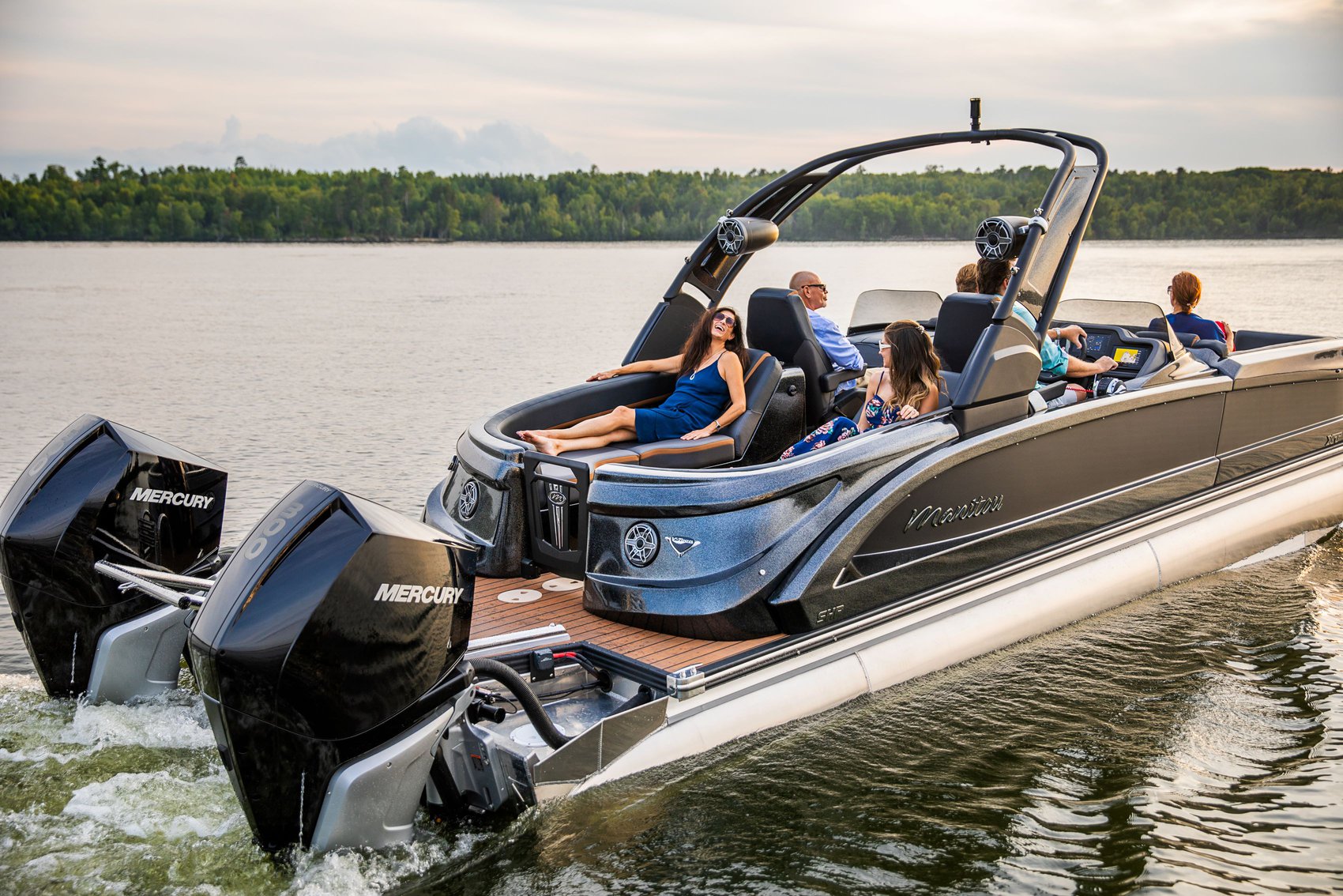
Pontoon Boats: A Comprehensive Guide for Enthusiasts

Nautical Flags: Essential Guide for Maritime Communication

Canoe vs Kayak: Essential Differences Explained
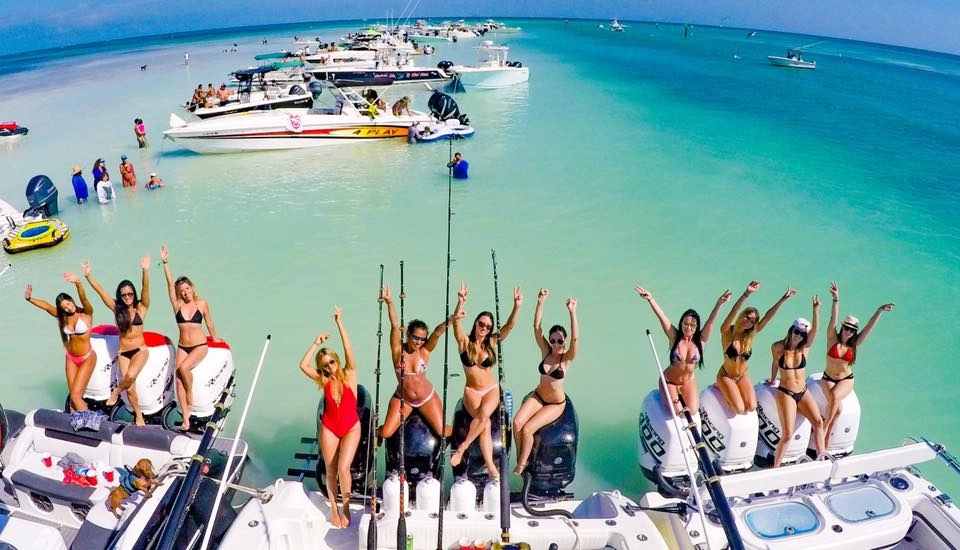
Miami's Top 5 Sandbars: Ultimate Guide for Boaters and Beach Lovers
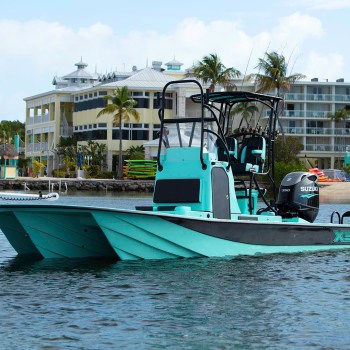
Tri Hull Boat Models: Specs, Prices, and Competitors Explained
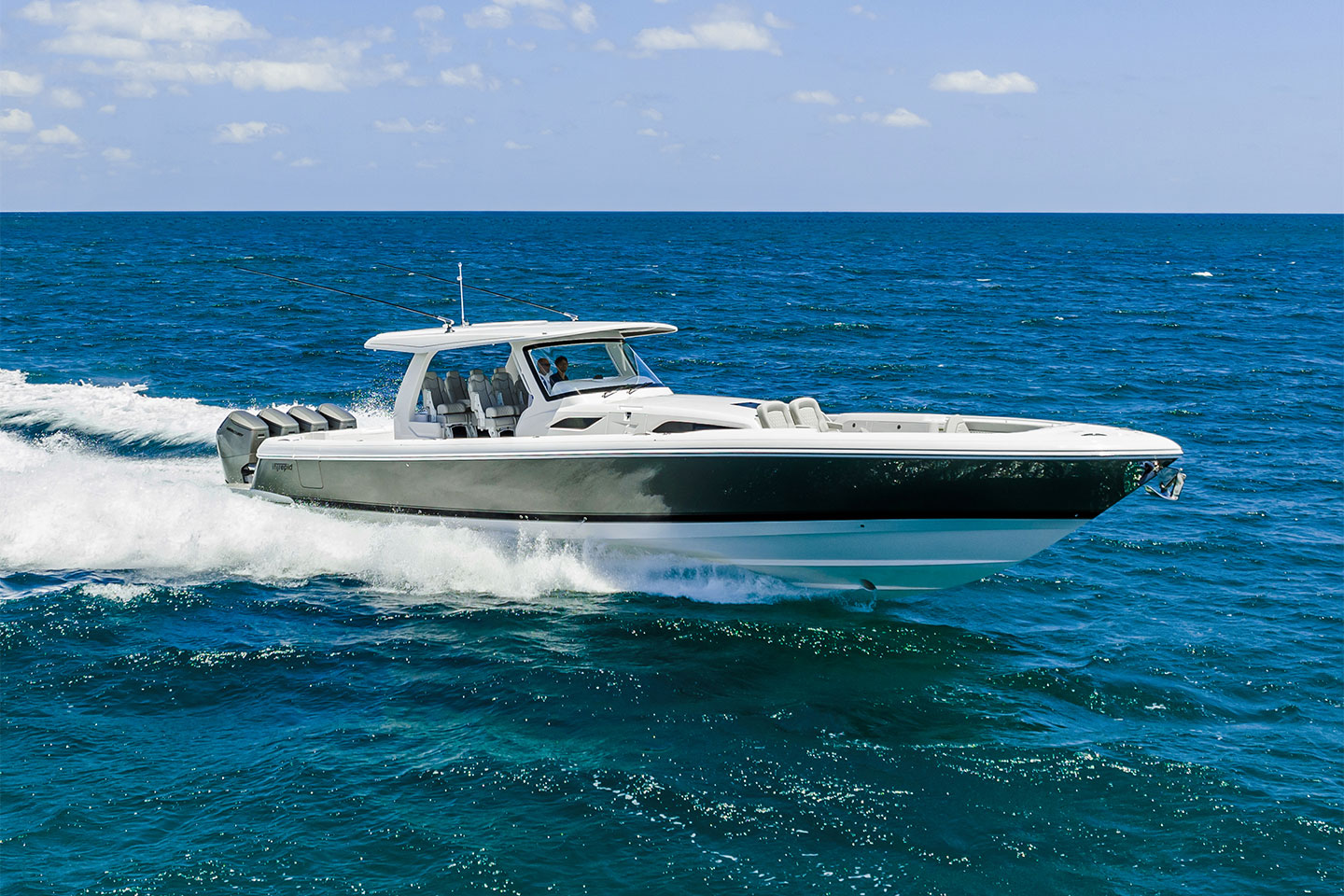
INTREPID POWERBOATS AT THE 2024 PALM BEACH INTERNATIONAL BOAT SHOW

West Marine: Expert Gear and Supplies for Maritime Enthusiasts
- The magazine
Current issue
- All the issues
- My magazines
- Technical specifications
- Multihull of the Year
- Classified Ads
- Destinations
- Online store
- All the magazines
- Subscriptions
- Accessories

Long-distance transport for a multihull: cargo ship or delivery
Create a notification for Multihulls Match
We will keep you posted on new articles on this subject.

Published 23/03/2018
By Philippe Echelle
Published: may / june 2018

Choose the option that suits you best!

Issue #: 159
Published: May / June 2018
- Price per issue - digital : 6.20€ Digital magazine
- Price per issue - print : 8.50€ Print magazine
- Access to Multihulls World digital archives Digital archives
For transport by cargo ship, by Mathieu Le Bihan
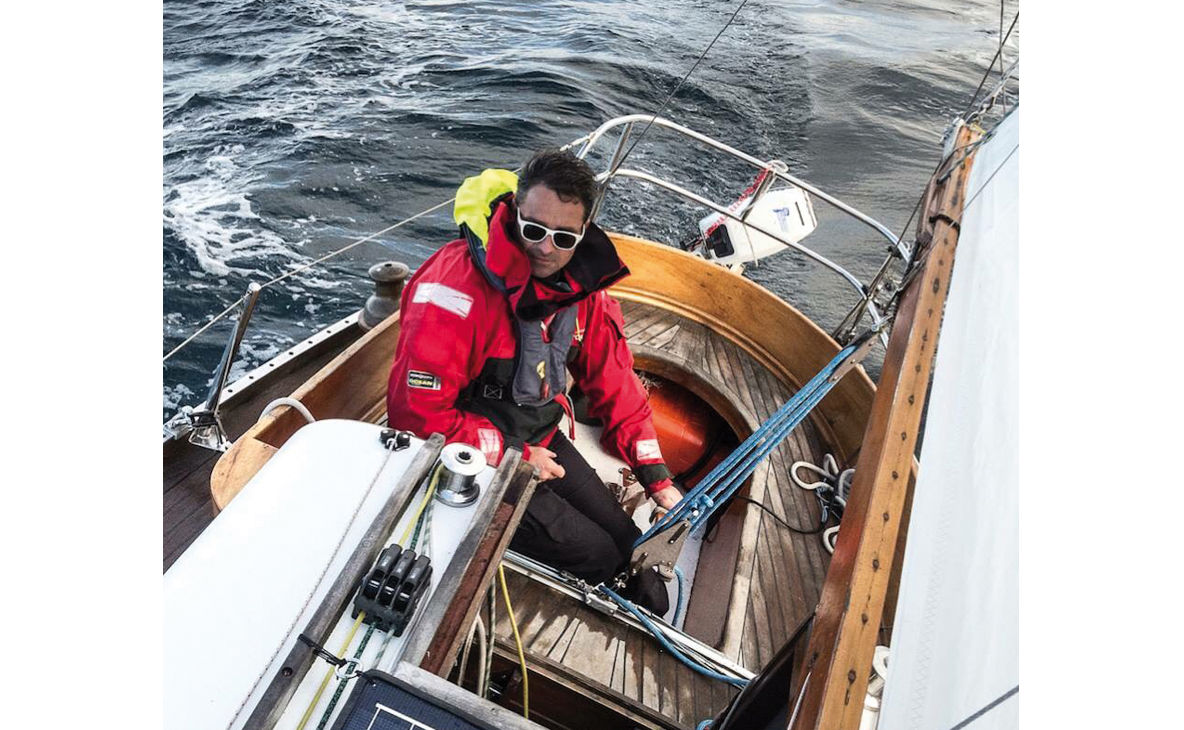
Coming from the shipping world, Matthieu spent several years as an expatriate, between the Caribbean and South America. His role: to organize the merchant ships’ stopovers, on behalf of a French shipowner. In 2011, on returning to Brittany, he specialized in ocean racing logistics, and organized transport by freighter for the Transat AG2R, Mini Transat and Route du Rhum fleets. At the end of 2016, he joined the Sevenstar Yacht Transport group, the world leader in yacht transport.
Leisure sailing has entered directly into the plug-and-play era.For a good number of sailors, crossing an ocean is no longer a Grail in itself; it is even felt to be a time constraint and a not-inconsiderable risk factor (human and equipment). Maritime boat transport is logically in keeping with this search for immediate pleasure and cruising with no constraints. It allows fast, safe access to the ultramarine cruising areas that many leisure sailors only touch with their fingertips on the glossy pages of their specialized magazines. Few of them sail there. Thanks to transport by freighter, this dream becomes reality: the islands and lagoons are yours! Forget the dull winter weather, next season you will be cruising in the Adriatic, in Polynesia, or towards Phuket. The range of possibilities opens up to you; the only limit is your imagination!
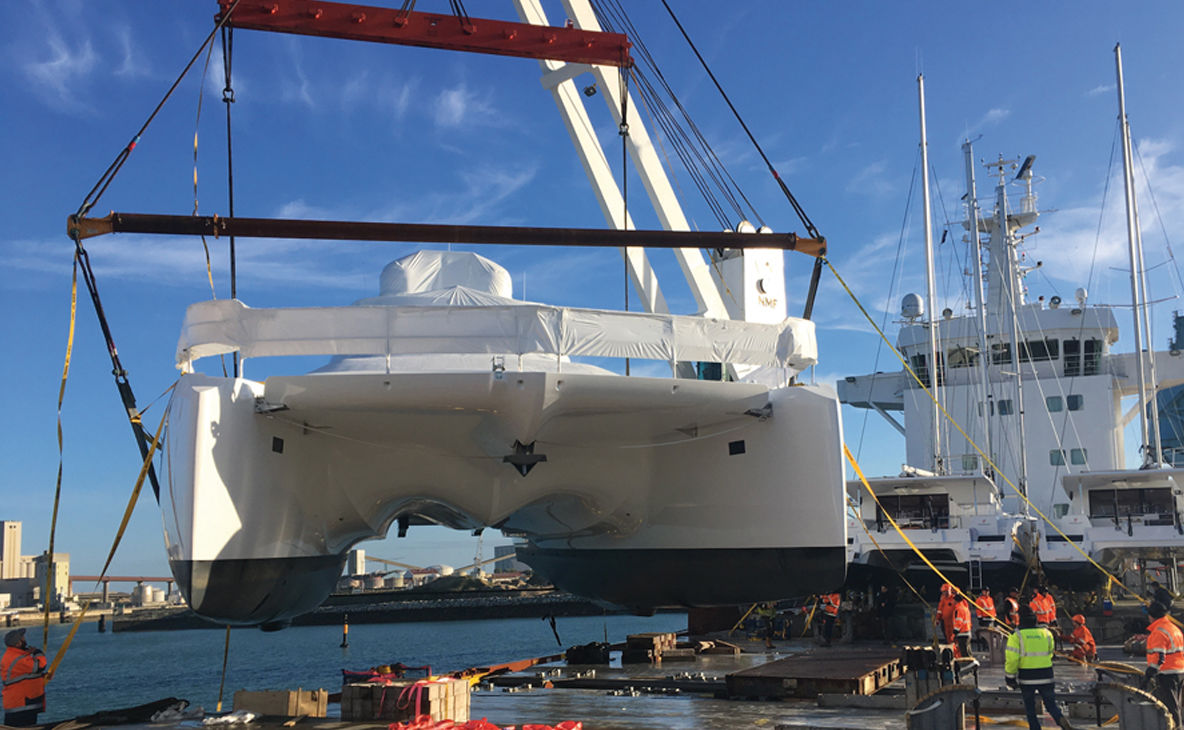
Transport by freighter: The fast, reliable and accessible solution
Fast: Nowadays, in under 15 days, your catamaran, firmly secured to the deck of the freighter, will do the trip from La Rochelle to the West Indies or Florida, safely. After 35 days' transport, you will have the pleasure of dropping anchor at Papeete, Sydney, or Singapore. Allow 20 to 30 days extra for a crewed delivery, if there are no problems on the way…
Reliable and safe: transport by freighter frees you of the risks inherent in a crewed delivery trip: unfavorable winds, flat calm, and the ensuing delays. It also offers the undeniable advantage of protecting your multihull from the wear and tear of an ocean crossing: rig, sails, engines and structure will not be used during the voyage.
Accessible: contrary to received ideas, transport by cargo ship is not only reserved for superyacht owners. Today, the transport budget for a 40-foot catamaran to cross the Atlantic is around 15,000 euros, including all expenses – a cost comparable to that of a delivery by a professional crew, minus the sailing risks, the fuel consumed and the wear and tear on all the equipment.
In conclusion: for an equivalent budget, the scales weigh clearly in favor of transport by freighter. More and more owners want to protect their nautical assets and take full advantage of their leisure time, so they choose this solution. For those who have a taste for risk and prefer the unforeseen, the unknown…crewed delivery could be an option.
For delivery accompanied by a skipper, by Marc Peeters
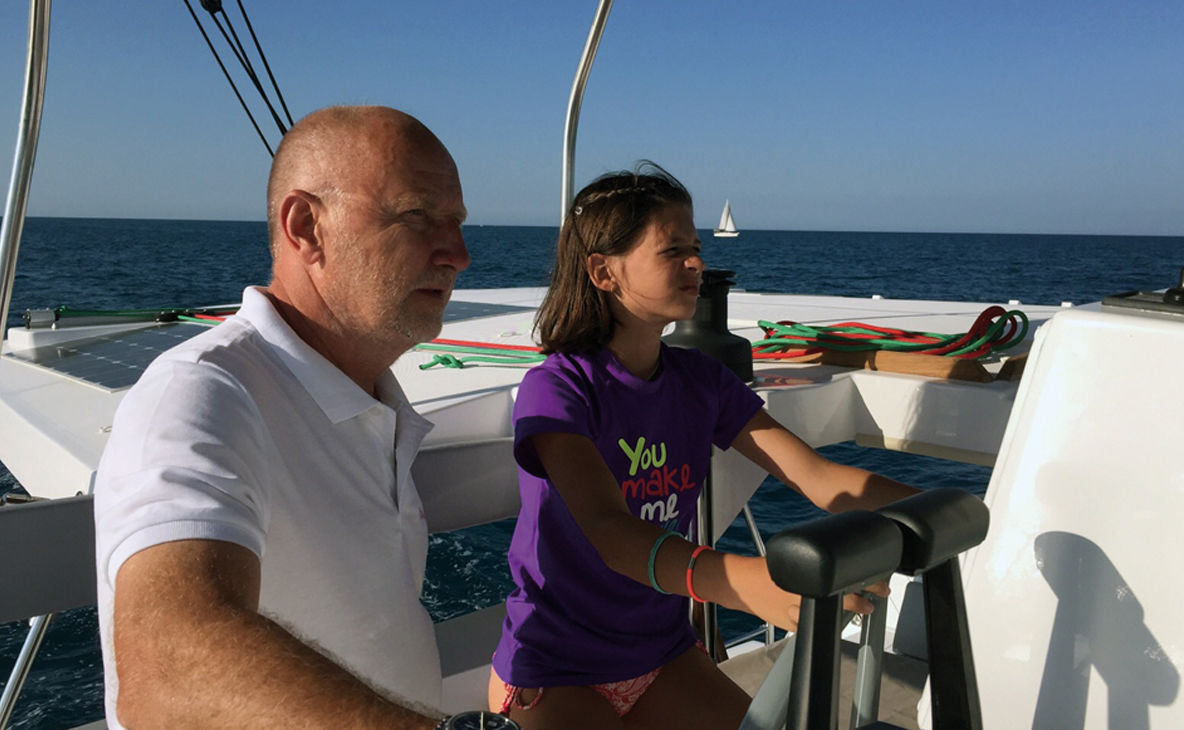
Marc Peeters is a skipper with a ...
Subscribe to Multihulls World and get exclusive benefits.
Tags :
- Catamaran ,
- trimaran ,
- Multihulls Match
Most-read articles in the same category
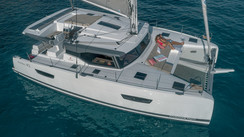
Bahamas, White Cay
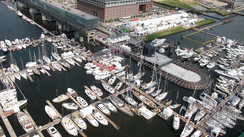
Calendar of International Boat Show this Fall
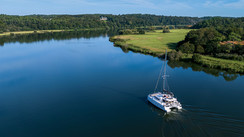
The photographer's eye

Who's Who : Nigel Irens
What readers think.
Post a comment
No comments to show.
MW #197 - Oct / Nov 2024
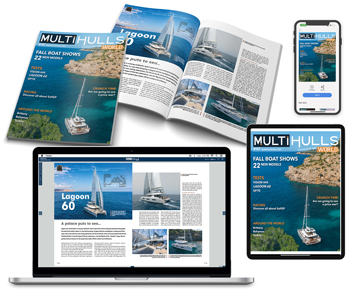
Match : Propellers
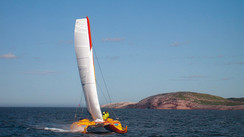
Fast cruising multihulls: centerboards or daggerboards?
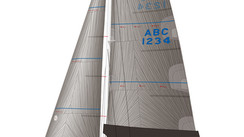
Cruising catamaran rudders: lifting or fixed?
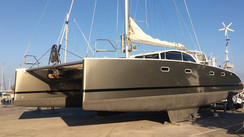
Protecting a multihull: vinyl wrap or paint?
Subscribe now.
The latest news from €3 / month
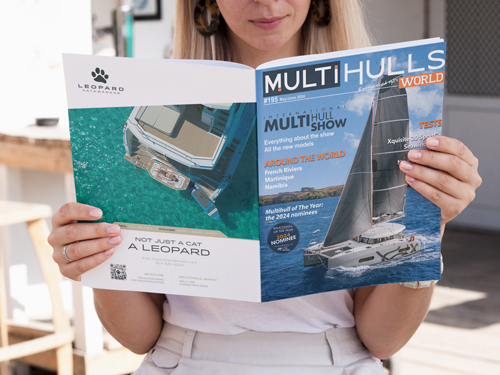
Video of the month
Our latest YouTube hit!

The Multihull of the Year
The 2024 results

Classified ads

Power catamaran Fountaine Pajot Greenland 34 - fully self-sufficient

Lagoon 630 MY (2016) v. 5 cabins

Splendide Aquila 54 Yacht for sale

Aquila Molokai 28
Vous avez ajouté " " à vos favoris., vous avez supprimé " " de vos favoris., in order to add this article to your favorites, please sign in..

- DREDGE/CIVILS
- AUSMARINE (OCEANIA)
- MIDDLE EAST/NORTH AFRICA
- LATIN AMERICA
EDITORIAL | Safe, seaworthy catamaran cargo ferries

In my quest for solutions to the problems of ferry safety, particularly in developing countries, I have coincidentally studied some very interesting and well-proven concepts for smallish, safe catamaran cargo vessels.
While larger versions would be equally appropriate for trans-oceanic routes, these 25- to 80-metre LOA vessels have, to my mind, enormous potential in the riverine and archipelagic regions where so many of the world's fatal cargo vessel and passenger ferry accidents occur on domestic routes.
A number of examples of varying sizes and capacities are already in existence but, apart from about twenty vessels in the Archipelago Ferry Corp "Fast Cat" fleet in the Philippines, none that I am aware of are operating in developing countries. That is a pity because the Fast Cats have already made a significant contribution to the recently much reduced ferry fatality rate in that country.
They can be built of steel or aluminium or a combination of the two. They do not have to be fast, 12 to 15 knots would be sufficient for most cargo services and to enable them to escape bad weather. That means they can be comparatively low powered and thus very economical to own and operate. They must, of course, be properly designed, constructed and maintained.

One of the now numerous Fast Cats of the Filipino company Archipelago Ferry Corp. They were designed by Sea Transport Solutions and built in China by Bonny Fair Shipbuilding.
Two separate engine rooms and propulsion systems ensure reliability, manoeuvrability and redundancy, thus ensuring maximum safety. Safety, of course, is considerably enhanced by having two multi-compartmented hulls and by the stability afforded by the wide beam of catamarans. The cargo decks are completely and quickly self-draining. Their designs are a simple concept.
All cargo, both containerised and Ro-Ro, is carried on the main deck so the hulls remain essentially sealed for floatation purposes. No cargo need be carried in the hulls that are reserved for machinery, fuel, water and crew accommodation.
The hulls are divided into numerous watertight compartments. They can also, as for example do the Fast Cats, carry passengers. They are usually accommodated in a superstructure located to one side and above the open cargo deck. Container handling can be undertaken using mobile cranes ashore. Ro-Ro ramps are standard and longer ramps could be fitted to enable loading directly to or from a beach over the bow.
Most of the extant examples of these medium- to low-speed "cargo cats" (less than 20 knots) have been designed by the Australian-based Ballantyne family's Sea Transport Solutions. A significant number of their designs are currently operating around the world mostly in Ro-Pax configurations.

Noord Nederland , a Sea Transport Solutions-designed pure "cargo cat" has operated successfully in the Netherlands since 2002. In 2016 the vessel was extended from 47 metres to 67 by Damen Shiprepair.
A pure cargo version, Noord Nederland , has been operating in the Netherlands since 2002. In 2016 it was extended by Damen Shiprepair from 47 to 67 metres in length.
Others such as Sea Link Travel's Bruny Island Ro-Pax ferries, which are about to be built by Tasmania's Richardson Devine Marine to Incat Crowther designs, follow a similar design concept. The first will be 45 metres LOA and the second, somewhat larger.
It can only be hoped that this development of simple, safe and economical vessels will spread to the poorer, more dangerous parts of the world. They could significantly reduce the maritime death toll, as they are already doing in the Philippines. At the same time, they will offer reliable, economical transport for a wide range of containerised and Ro-Ro cargoes.
Related Stories


Catamaran and Monohull Compared: Which is Better, Faster, Safier, and More Stable in Rought Sea?
Catamarans and monohulls are two vessels that have distinct features from each other. Catamarans have two hulls connected by a bridge structure whereas, as the name suggests monohulls have a single hull.
Both types of vessels have different features in terms of both aesthetics and function, let’s get into the details to find out more.
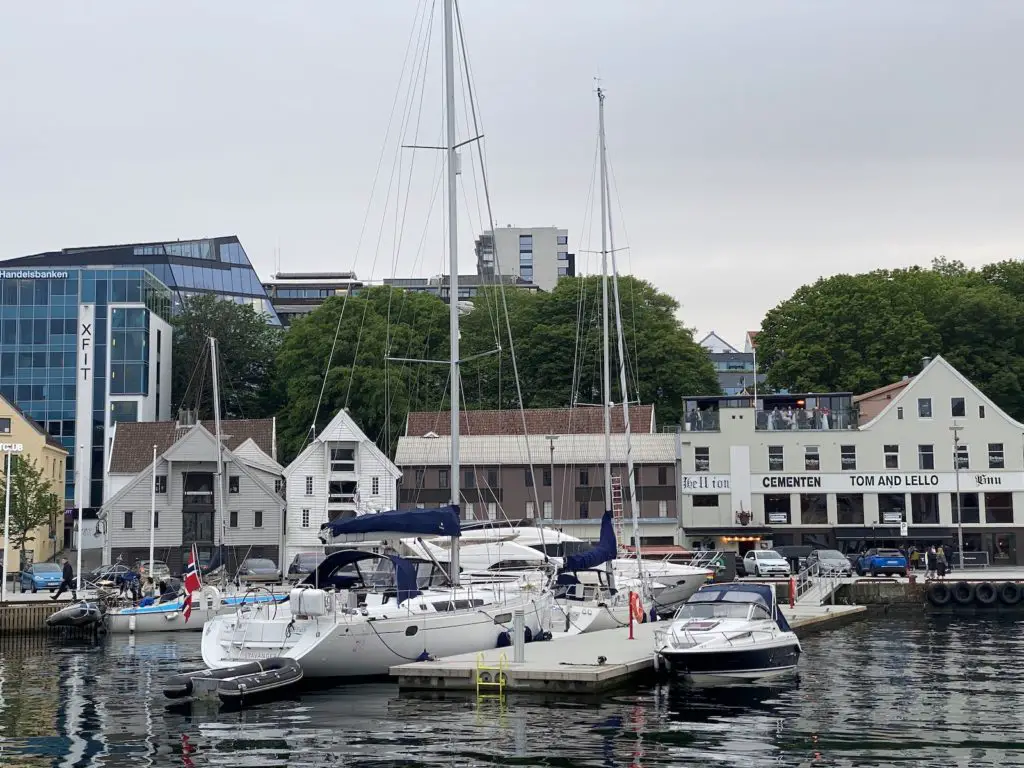
Do Catamarans Have More Space?
Since catamarans have two hulls, they are normally wider than monohulls. This gives the designers and owners the flexibility to maximize the space requirements in terms of space and function.
Vessels can be designed for either commercial or recreational uses. The additional space can serve as an advantage in both fields. In terms of recreational vessels such as yachts, the accommodation can be split up between the two hulls and can be well designed in such a manner that separate spaces can be allotted for the owner, guest, and crews with separate passages such that the path between the primary guests and the crew don’t collide.
In terms of interiors, the huge space addition can give the owners much more flexibility in choosing furniture without size restrictions and more space for additional appliances such as washers, dryers and so on which can make life on board much easier.
The deck can also house more people without the feeling of being enclosed in a closed space and for this reason, catamarans are normally used as party boats with wider deck space and more space to move around.
In terms of storage, catamarans have better storage options than monohulls as both the hulls can be utilized for different functions which not only increases the overall capacity of storage in terms of fuel , fresh water , cargo, and so on but also gives the designer an option to segregate the storage areas for different uses.
Catamarans are also now a growing trend in the fishing industry as the wide decks provide more area for the fisherman to move around without any obstructions making fishing much easier also, catamarans tend to roll less which stabilizes the vessel better than monohulls, giving more stable conditions for fishing without the risk of going aboard.
Due to the wider proportions, the spaces can also be designed in such a way so as to house tenders, jet-skis, and so on, on either of the deck spaces normally aft of the vessel mostly functioned by a small crane which can launch the vessel into the water.
Recreational activities such as swimming and diving can be performed with ease on both types of boats. On catamarans, the wide aft spaces also provide effective spacing for housing equipment and accessories such as dive tanks, telescopic staircases and so on which can serve as must-haves for similar activities.
The same can also be performed on monohulls with limitations to the width of the vessel. The wide superstructures on catamarans can also be used to house solar panels for green and renewable energy solutions which surely is going to be a great advantage in the near future.
Monohulls have the advantage of having wider compartments below the deck when compared to catamarans, as the overall width of the hull is larger than a single hull on a catamaran. This gives room for larger living spaces below the deck, which can have the option to walk around on either side of the bed.
Why Are Catamarans More Expensive Than Monohulls?
Catamarans are normally priced more than monohulls. This is because they have more overall area which requires more raw materials in the production stage than monohulls.
In terms of machinery, they have two or more engines on each hull depending on the width of each semi-hull and its supporting machinery which can increase the overall cost of the final product.
In terms of engines, maintenance is less frequent when compared to monohulls as they don’t need to operate on their maximum limits to push the vessel.
Maintenance costs can also be higher for catamarans as they have more machinery and more deck space, but on the contrary, the ease of maintenance will be much better in catamarans than monohulls as they have better accessible spaces.
The preventive maintenance for corrosion and marine growth on catamaran hulls is also higher as they normally have more area to treat than monohulls.
Are Catamarans Faster Than Monohulls?
Catamarans tend to outperform monohulls due to their slender hulls which help in reducing the drag forces. On performance power catamarans the space between the two hulls is called a “Tunnel” which is designed in a similar manner to an aerofoil so that it acts like a wing, which increases the aerodynamic lift forces thereby increasing overall efficiency and top-end speeds of the vessel.
The balance between the hydrodynamic and aerodynamic forces is the key aspect that determines the performance and stability of high-speed catamarans.
Fuel economy is normally better on catamarans due to the higher lift forces and lower water friction compared to monohulls which thereby reduces the overall load on the engines, reducing fuel consumption.
Is A Catamaran More Stable Than A Monohull?
Catamarans are generally more stable than monohulls in terms of roll stability. Let’s take an example of balancing a stick in the middle compared to balancing it by supporting the two ends, obviously, the second case has an advantage. In a similar manner, we can observe that catamarans have better roll stability when compared to monohulls.
This gives them an upper hand in terms of comfort and executing different operations onboard the vessel with ease, also reducing the risk of people falling on board the vessel. Catamarans are mostly used as ferries or passenger vessels as people tend to get less seasick on these kinds of vessels.
The deeper the deadrise the better the sea-keeping characteristics, most monohulls are designed with a deep v deadrise and tend to outperform catamarans which normally have displacement or semi-displacement hulls, in rough waters.
The typical catamarans are better in shallower water than rough water due to this reason and that’s why we see most of the coastal or inland cruisers as catamarans and most ocean-going vessels as deep v monohulls.
The draft can be defined as the distance of the waterline to the keel of the vessel. Catamarans normally tend to have a lower draft compared to monohulls which gives them an advantage of plying over shallower waters without the risk of grounding.
The lower the draft of the less the vessel, the less it is in contact with water, and therefore the overall water friction resistance is reduced leading to the need for lower power to push the vessel and better fuel efficiency.
What Is Easier To Sail A Catamaran Or Monohull?
For the thrill of sailing most sailors prefer monohulls over catamarans. They are sensitive to different forces like wind and waves acting on the vessel and there is an immediate response on the vessel. They ride through rough and choppy waves; this is the experience the sailors look forward to, giving them an adrenaline rush.
Sailing catamarans do not respond similarly to monohulls as the overall motions are reduced and also monohulls maneuver much easier than catamarans at high speeds.
Docking in marinas usually is easier with monohulls than catamarans as they require lesser space to mauver into the docking space.
Which Is Safer Catamaran Or The Monohull?
Catamarans normally tend to be on the safer side than monohulls in terms of backups and safety. If any machinery fails there is always a backup, say for example if rudder machinery fails on the port hull we can always get back ashore with the help of the starboard rudder, similarly if an engine fails there is always the second engine which can be used as a backup.
In terms of reserve buoyancy, if the port side hull gets damaged, the vessel will still remain afloat. These advantages can help people on board keeping them safe and saving a life.
The only downside to the above aspects is the maintenance costs which come up with the same as we discussed earlier.
Which One Should I Get?
The type of vessel should depend totally on your end goals in terms of functionality, performance, region of operation, and so on.
But always keep in mind never to get blinded by the length when you compare a monohull to a catamaran. A monohull in comparison might be longer but the overall space which is measured in cubic space will be higher in the shorter-length catamaran.
Going through the pros and cons the final decision should be made depending on your personal requirements.

- Recent Posts
- Responsibilities of a Fourth Engineer on Cargo Ships – September 10, 2024
- The Role of Cargo Ships in Global Trade – August 22, 2024
- Report: Yang Ming’s YM Mobility Explosion at Ningbo-Zhoushan Port – August 9, 2024
About the author
I worked as an officer in the deck department on various types of vessels, including oil and chemical tankers, LPG carriers, and even reefer and TSHD in the early years. Currently employed as Marine Surveyor carrying cargo, draft, bunker, and warranty survey.
Latest posts

Is Maritime Security Necessary on Modern Ships?
It’s vital for ships to stay vigilant. Isolation from land means having no backup or protection for miles, making them vulnerable to attacks and other threats. Equip modern ships using modern maritime security methods.
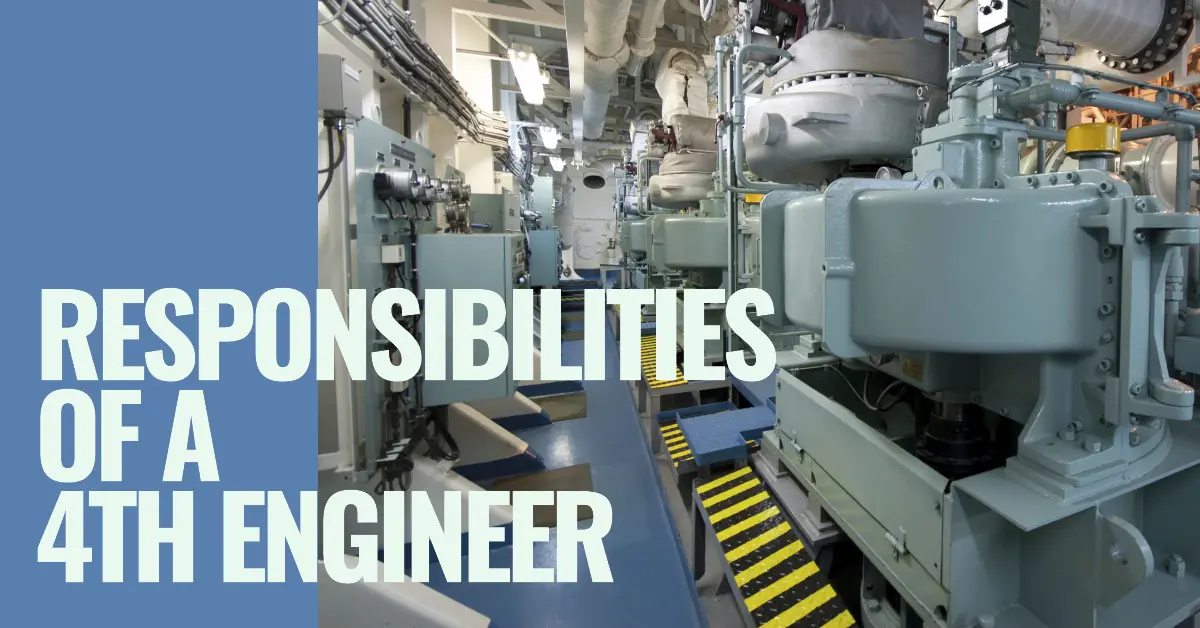
Responsibilities of a Fourth Engineer on Cargo Ships
A Fourth Engineer on cargo ships oversees engine room operations, machinery maintenance, and ensures compliance with regulations like MARPOL.

The Quality Control Process in Marine Manufacturing
Companies in the marine manufacturing space must have tight and effective quality control processes. What steps should an effective quality control process include?

Catamaran Vs Monohull

Monohulls and traditional sailboats, once ubiquitous, are giving way to modern catamarans. But how do these designs differ?
Monohulls have a single hull, and catamarans have two hulls side-by-side. Catamarans are faster than monohulls of the same length and displacement, but monohulls are stronger and more spacious. Monohulls are also cheaper and easier to build than multi-hulls.
In this article, we’ll cover the differences between catamarans and monohulls, along with the benefits and drawbacks of each design. We’ll also cover the sailing characteristics of each and why catamarans so easily outrun equivalently-sized monohulls.
We sourced the information used in this article from trusted sailboat design resources, along with manufacturer specifications and boat market analysis.
Table of contents
What is a Catamaran?
Catamarans are a kind of multi-hull sailboat with two hulls joined together. They are often short and wide, resembling a square or rectangle from above.
Catamarans are colloquially distinct from outriggers, which are double-hulled vessels with one large primary hull and a small outboard stabilizing hull.
Catamarans usually have hulls that mirror each other, both in size and arrangement. Sometimes, the interior layouts are mirrored, too—but this varies between designs and manufacturers. Catamaran hulls are narrower and taller than most monohull designs of equal lengths.
Catamarans have limited commercial and military utility, as these applications favor space and ease-of-construction over handling characteristics. That said, there are some commercial uses for catamaran designs—most commonly passenger and car ferries.
What is a Monohull Sailboat?
A monohull is probably what you traditionally think of as a boat. Monohulls are longer than they are wide. It features a single hull—it’s that simple. Sailing monohull designs have evolved over the centuries into many distinct types, usually distinguished by keel type.
Monohulls come in many shapes and sizes . For example, sailing monohulls designed for offshore use have long keels that sometimes extend much further below the waterline than the freeboard and cabin extend above it.
Monohull sailboats are also designed for other purposes, such as inland sailing and racing. These vessels have more contemporary characteristics, such as rounded shallow ‘canoe’ bottoms, V-bottoms, and fin keels.
Monohulls aren’t just sailboats. Virtually every cargo and container ship, warship, and many passenger ships are monohulls due to their strength, ease of construction, and high cargo capacity.
Are Monohull Sailboats More Common?
Monohulls are more common in every application, though multi-hulls are becoming more common for ferries. Monohulls have numerous benefits over multi-hulls, and these benefits only increase with scale.
Monohulls are easy to construct. They’re also cheap. Large monohull ships, such as container ships, can be built with very little material and effort. This is because the vast majority of the length of a monohull is just a box, with a bow and stern welded onto the end.
Sailboat construction is more intricate, but the costs are still lower. Plus, monohull designs are robust, and cabin space is plentiful. There’s a lot more study in the field of monohull design, which was the universal truth until somewhat recently.
But all in all, the reason why monohull sailboats are more common is that they work just fine. Most sailboat owners aren’t interested in breaking speed records or hosting dozens of people aboard their boats. As a result, a standard, simple, and easy-to-control monohull are more than sufficient.
Are Catamarans Faster than Monohulls?
Catamarans are most certainly faster than monohulls. This is almost always the case. Even the fastest production monohulls can’t hold a candle to the average cruising catamaran.
But why is this the case? Aren’t catamarans restricted by the same hydrodynamic forces as monohulls? As it turns out, they aren’t. This has to do with the unusual way hull waves impact speed.
Hull Speed Limitations
Monohull speed is limited by something called hull speed. Hull speed is determined using a formula that calculates the maximum speed a displacement hull can travel under normal power and conditions.
When a displacement hull moves through the water, it kicks up a set of waves at the bow and stern. These waves travel along the side of the vessel and create drag, which slows down the boat. Normally, the power of the wind can overcome this drag—but only to a point.
At a certain speed, the waves kicked up by the bow will sync with the waves kicked up at the stern and begin ‘working together’ against the boat. The speed at which this occurs is the hull speed, which is calculated from the length of the boat.
Hull speed limitations for monohulls aren’t universally true all the time. Some vessels exceed it, and some don’t—but the number is a useful estimate of the limitations of monohull designs. Modern monohulls with clever hull shapes can defeat hull speed calculations.
Do Hull Speed Limitations Apply to Catamarans?
Surprisingly no—hull speed calculations don’t work for catamarans. This is because, for one, the hulls are shaped differently. Alone, catamaran hulls wouldn’t float correctly. But together, they create different hydrodynamic effects and cancel out the effects of hull speed.
This means that catamarans can easily exceed the speeds of even the fastest monohulls of equal length—and sometimes beat them by a margin of 50% or more. It’s not unheard of for 40-foot catamarans to exceed 20 knots, whereas 40-foot monohulls rarely get past 10.
Are Catamarans More Comfortable than Monohulls?
Catamarans can be much more comfortable than equivalently-sized monohulls—up to a point. This is because catamarans engage in ‘wave piercing’ and have a wider and more stable footprint on the water.
Catamaran hulls, when properly designed, can slice through parts of a wave instead of riding over every peak and trough. This effectively reduces the height of the weight, which reduces the amount the boat rolls.
Additionally, the wide footprint of a catamaran allows some waves to simply pass right under it, keeping the boat level for longer durations. Catamarans also don’t heel under sail—instead, they plane slightly, raising the bows out of the water and reducing bumps.
Monohull Benefits
Monohulls are proven in all conditions. A well-designed displacement monohull sailboat can ride out the strongest storms, and monohull workboats can support enormous loads and move them efficiently. They can be fast, comfortable, and also easy to sail (even for beginners).
Monohulls are cheap to build and forgiving, as precision doesn’t have to be microscopic to get them to sail right. They’re robust and strong, featuring a naturally stress-resistant hull shape. They’re also easy to modify and aren’t required to meet as strict of dimensional ratios to operate.
With a monohull sailboat, you have a lot of interior room to work with. This means that monohulls are available in numerous cabin layouts and are just as easy to modify as they are to build. Monohulls often have a center of gravity at or below the waterline, which enhances stability at steep heel angles.
On the water, displacement monohulls can weather extreme conditions with ease. They lack the initial stability of multi-hulls, but they can recover from knockdowns on their own, and they’re very difficult to push past their rollover point.
Why do Catamarans Cost More than Monohulls?
Catamarans cost more than monohulls because they’re more expensive to build, more complex to engineer, and require more material. This isn’t always the case, but the design of catamarans requires much more careful engineering and strength-of-materials analysis than comparatively simple monohulls.
There are several critical structural points on catamarans that monohulls lack. In fact, the very shape of a monohull is physically strong—so it has inherent durability. Catamaran hulls must be joined in the middle, and the mast must have a strong point far from the inherently sturdy hulls.
This requires stronger materials and more care during design or construction. This is why catamarans remain a premium part of the sailboat market and why they still aren’t the most popular sailboats despite their numerous performance and comfort benefits.
Catamaran Cabin Layout
Catamaran cabins are split between the two hulls, and there’s usually a large pilothouse in the center. Pilothouse catamarans can be quite spacious, primarily due to the large space between the hulls.
The pilothouse is usually where kitchen and sitting areas are located, along with cockpit access and the controls of the sailboat. The mast is also located in this area.
Catamaran cabins sometimes mirror each other. For example, each hull may contain two identical bedroom/bathroom combos, while the center console area contains the kitchen and living spaces.
The two identical hulls sometimes make for unusual design decisions (such as small catamarans with four master bedrooms), but owners say this gives their passengers a much better experience than a monohull cabin.
Monohull Cabin Layout
Monohull cabins, with the exception of split-cabin sailboats with a center cockpit, have only one large interior space to work with. It’s usually much wider than catamarans of equal length.
Monohull cabins are usually accessible from the bow (via a flush deck hatch) and the stern via a traditional companionway. They run the span of the hull between the bow and the cockpit and sometimes include spare berths under the cockpit seats.
These spare berths are often used as convenient sea cabins, as they offer quick access to controls in case of an emergency. Catamarans often have convertible berths in the center console for the same reason.
Monohull cabins are traditional and include everything that catamaran cabins do—albeit with slightly less room overall. That said, individual spaces are often much wider, and facilities are more appropriate.
Related Articles
Daniel Wade
I've personally had thousands of questions about sailing and sailboats over the years. As I learn and experience sailing, and the community, I share the answers that work and make sense to me, here on Life of Sailing.
by this author
Learn About Sailboats

Most Recent

What Does "Sailing By The Lee" Mean?
October 3, 2023

The Best Sailing Schools And Programs: Reviews & Ratings
September 26, 2023
Important Legal Info
Lifeofsailing.com is a participant in the Amazon Services LLC Associates Program, an affiliate advertising program designed to provide a means for sites to earn advertising fees by advertising and linking to Amazon. This site also participates in other affiliate programs and is compensated for referring traffic and business to these companies.
Similar Posts

Affordable Sailboats You Can Build at Home
September 13, 2023

Best Small Sailboat Ornaments
September 12, 2023

Discover the Magic of Hydrofoil Sailboats
December 11, 2023
Popular Posts

Best Liveaboard Catamaran Sailboats
December 28, 2023

Can a Novice Sail Around the World?
Elizabeth O'Malley
June 15, 2022

4 Best Electric Outboard Motors

How Long Did It Take The Vikings To Sail To England?

10 Best Sailboat Brands (And Why)
December 20, 2023

7 Best Places To Liveaboard A Sailboat
Get the best sailing content.
Top Rated Posts
© 2024 Life of Sailing Email: [email protected] Address: 11816 Inwood Rd #3024 Dallas, TX 75244 Disclaimer Privacy Policy

Canadian Coast Guard Acquires Its First-Ever Autonomous Surface Vessel

Ukraine Accuses Russia Of Targeting Grain Ship With Missile In Black Sea

New Era Of Research As U.S. Department Of Energy’s First Hybrid Research Vessel Delivered

Salvage Teams To Resume Risky Operation On Houthi-Hit Sounion Tanker Still Burning In Red Sea

Main Types of Catamarans Used in the Shipping World
A catamaran is a boat with two hulls instead of a monohull which the traditionally designed sailing boats have. They were designed to be fishing boats though their use has increased today. Generally, they have more interior space, saloons and cabins than a conventional sailing vessel.
The following points will enable us to understand the boat and its types clearly.
Origin of Catamarans/Cats
The fishing community ‘Paravas’ in Tamil Nadu first created the catamaran in the 17 th century. The main feature of these boats was that they had two hulls which offered a lot of stability and balance compared to the other fishing boats of that era. This concept of two-hulled boats was adopted by the British and then made famous across the world.
Present-Era Cats
In the present times, cats have evolved from being mere sailboats or fishing boats. There are two basic design types of catamarans: Pontoon and SWATH (Small Waterplane Area Twin Hull).
The former is relatively small, compact and uses floats (known as pontoons in marine slang) as a major technology to propel the water along with the dual hulls. In contrast, the latter is quite large and is designed primarily to maintain balance in sea areas with unpredictable currents and tides.
It has to be noted that in today’s times, all variations of catamarans are made of fiberglass or carbon fiber. They are motorised and engine-powered, making them even more reliable than they used to be before.
Physical Characteristics of Cats
Generally, charter catamarans have twin engines, one in each hull to manoeuvre. It also has a mast that supports the mainsail and another for the headsail. Power cats are an example of innovation, offering the best experience.
Power cats or multi-hull powerboats have large engines and no masts or sails. Their powerful motors give them high speeds, and their reinforced hull types handle their weight. Their demand is growing daily, and they are available in many stylish designs. Another feature of cats is that they can go into shallower waters, as they don’t have deep keels.
Catamaran sailboats have a minimum sail area of 470 square feet and a maximum of 2260 square feet. Some famous builders are Robertson and Caine, Lagoon, Seawind, Fountaine Pajot, Gemini and Leopard. They make catamarans with secondary inboard, outboard, electric and other propulsion systems in diesel, gas, and other fuel systems. Custom-made catamaran sailing vessels are a speciality of the Privilege Shipyard. Usually, the vessel’s average capacity depends on its size. Some can carry about 16 to 60 people.
These new vessels are sought for their rich legacy, greater draft and wide beam, which make them excellent for overnight cruising and day sailing.
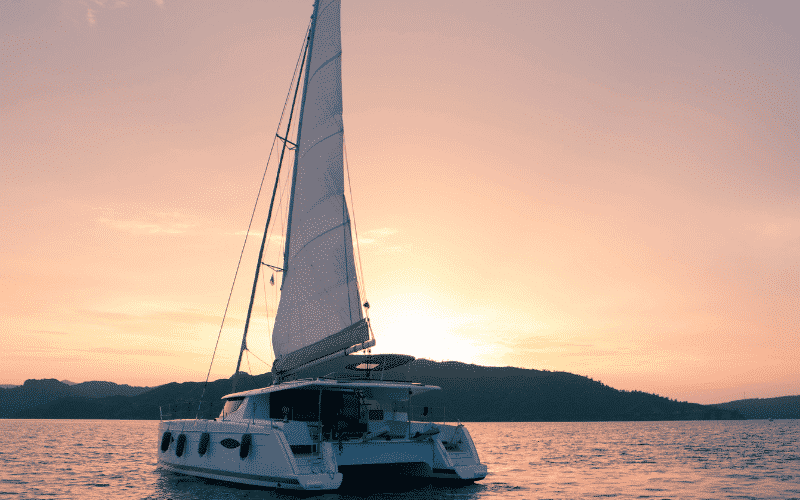
Some of the main types of catamarans can be elaborated as follows:
Cruise Catamarans
These catamarans are also known as luxury catamarans or ferry catamarans. This is because they offer the best possible luxury to the passengers who take a trip in such ferries. And the addition of engines has made such ferries even more attractive to the crowd.
Also, the space between the two hulls is filled by a cockpit, a main cabin and netting for relaxing in the sun. Their size and stability is the reason for their popularity. With two hulls, there is enormous space on a catamaran above and below the decks, which provides comfort on sailing vacation. Hence, they are preferred by vacationers for their unique characteristics.
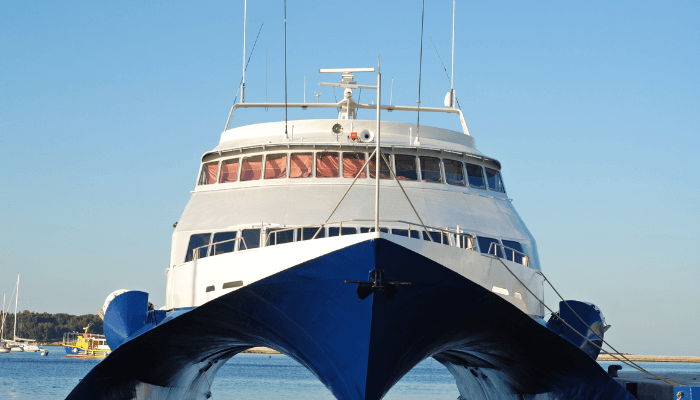
They also offer great speed, which ensures that the passengers get the cruise trip of their choice without any lapse in time. It has to be noted that luxury catamarans operate not internationally between nations but internally within a country.
Some popular cruise catamarans worldwide are the Stena Voyager (operating in the Irish Sea) and Victoria Clipper IV (operating between Seattle and Victoria in the USA).
Sailing Catamarans
Catamaran sailing is another type and utility of a catamaran. Sailing catamarans are used for recreational purposes by people who want to experience the life of a sailor.
Catamaran sailing does not involve any place for residing in the boat. In other words, catamaran sailing can also be referred to as catamarans used as yachts .
The average speed achieved in a day in a sailing catamaran is up to 300 nautical miles. Such catamaran sailing was first introduced in Europe though it has started gaining popularity worldwide.
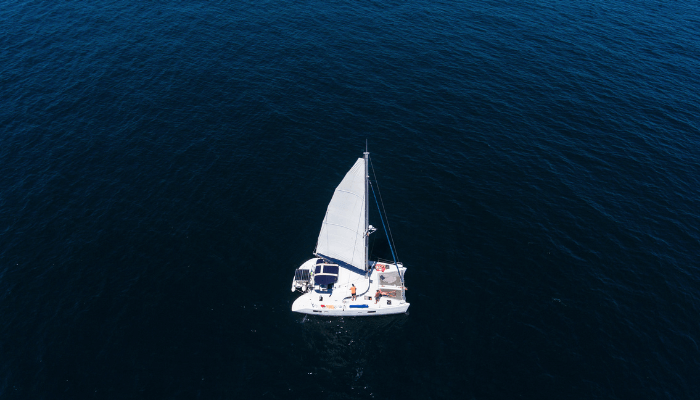
It has to be noted that catamarans are quite novel in their creation and development. Unlike other boats, they have not become inoperative or extinct.
Their name still commands unique respect, making a catamaran adapt more successfully to the changing era and times .
Frequently Asked Questions About Catamarans
1. what are catamarans used for.
Catamarans are a preferred option for day sailing, cruising, fishing etc. Many boat charter companies offer their customers yachts, motor yachts and catamarans. Though their design dates back 100 years, the updated and technologically updated catamarans have a massive demand in the sailing market.
2. What are the disadvantages of catamarans?
Catamarans are 150 to 200 per cent more expensive than yachts of the same length. Also, special marinas are built for these vessels due to their width. Also, they are costlier to maintain and repair than other similar vessels.
3. What is the speciality of catamarans?
Catamarans offer more stability as they have two hulls, which decrease the chances of people falling overboard. They are larger and more comfortable than normal sailing boats, not to forget their eye-catching designs.
4. Do they have washrooms?
Today, catamarans have all amenities, including saloons, seating areas, well-fitted washrooms and plenty of interior space. Also, during bad weather, they can be steered from inside.
5. What is the lifespan of a catamaran?
On average, a catamaran can last for 15 to 25 years and even 30 years if it is well-kept and maintained. Its lifespan also depends on the usage, type, quality of construction material etc.
You might also like to read
- L-Cat: A Multi-Purpose Supply Catamaran
- The Devil Cat: The Devilishly Fast Wave Piercing Catamaran
- Unique Catamarans: The Afai 08
- What is a SWATH Ship?
- Types of Sailboats – A Comprehensive Classification
Disclaimer: The authors’ views expressed in this article do not necessarily reflect the views of Marine Insight. Data and charts, if used in the article, have been sourced from available information and have not been authenticated by any statutory authority. The author and Marine Insight do not claim it to be accurate nor accept any responsibility for the same. The views constitute only the opinions and do not constitute any guidelines or recommendations on any course of action to be followed by the reader.
The article or images cannot be reproduced, copied, shared or used in any form without the permission of the author and Marine Insight.

About Author
Zahra is an alumna of Miranda House, University of Delhi. She is an avid writer, possessing immaculate research and editing skills. Author of several academic papers, she has also worked as a freelance writer, producing many technical, creative and marketing pieces. A true aesthete at heart, she loves books a little more than anything else.
Read More Articles By This Author >
Disclaimer : The information contained in this website is for general information purposes only. While we endeavour to keep the information up to date and correct, we make no representations or warranties of any kind, express or implied, about the completeness, accuracy, reliability, suitability or availability with respect to the website or the information, products, services, or related graphics contained on the website for any purpose. Any reliance you place on such information is therefore strictly at your own risk.
In no event will we be liable for any loss or damage including without limitation, indirect or consequential loss or damage, or any loss or damage whatsoever arising from loss of data or profits arising out of, or in connection with, the use of this website.

Do you have info to share with us ? Suggest a correction
Daily Maritime News, Straight To Your Inbox
Sign Up To Get Daily Newsletters
Join over 60k+ people who read our daily newsletters
By subscribing, you agree to our Privacy Policy and may receive occasional deal communications; you can unsubscribe anytime.

BE THE FIRST TO COMMENT
Leave a reply.
Your email address will not be published. Required fields are marked *
Subscribe to Marine Insight Daily Newsletter
" * " indicates required fields
Marine Engineering
Marine Engine Air Compressor Marine Boiler Oily Water Separator Marine Electrical Ship Generator Ship Stabilizer
Nautical Science
Mooring Bridge Watchkeeping Ship Manoeuvring Nautical Charts Anchoring Nautical Equipment Shipboard Guidelines
Explore
Free Maritime eBooks Premium Maritime eBooks Marine Safety Financial Planning Marine Careers Maritime Law Ship Dry Dock
Shipping News Maritime Reports Videos Maritime Piracy Offshore Safety Of Life At Sea (SOLAS) MARPOL
WAIT! Did You Download 13 FREE Maritime eBooks?
Sign-up and download instantly!
We respect your privacy and take protecting it very seriously. No spam!

Ferry Design: Monohull Versus Catamaran
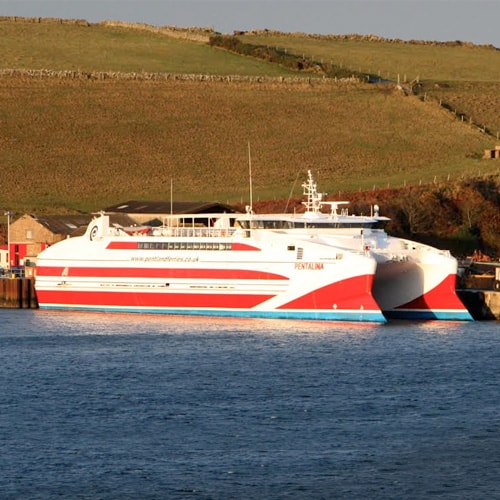
An analysis in efficiency and operability in the medium-speed, medium-sized ferry sector.

In the small to medium-size ferry industry, controversy continues about which hull type is greater in efficiency and operability: the monohull or the multi-hull. Much of the debate centres around the long-held belief that multi-hull ferries have an operational weakness in comparison to their single-hull competitor.
But today, this belief isn’t necessarily the case, considering the increasing number of medium-speed RO-PAX catamarans that have been built in the past few decades.
So which hull-type is best for ferry operations?
Let’s look at the one-on-one comparison study conducted by Dr. Alf Baird between a medium-speed monohull and a multi-hull catamaran RO-PAX ferry. Both ferries have similar vehicle deck space, speed and operate within fairly short island routes that occasionally experience severe weather and rough seas.
The considerations in the comparison study were:
- Efficiency: Each ferry’s design aims to minimise a vessel's block coefficient, its resistance, and its displacement, while striving to increase the revenue earning deadweight.
- Motion Sickness Incidence: ‘MSI’ or Motion Sickness Incidence is a function of motion and extent of time. Catamarans have a different motion to monohulls; however, this doesn’t necessarily mean the MSI is greater for a catamaran than a monohull.
- Manoeuvrability Catamarans are known for having the ability to manoeuvre in confined port areas even during strong winds due to their widely spaced hulls. Monohulls tend to experience more cancellations due to unfavourable weather and are much more difficult to handle in confined port spaces.
- Sea Keeping ‘Seakeeping’ refers to a vessel’s ability to withstand and maintain speed during poor weather conditions and high waves.
- Other Factors: Each ferry’s overall level of safety, the quality of evacuation procedures and cost to operate are considered.
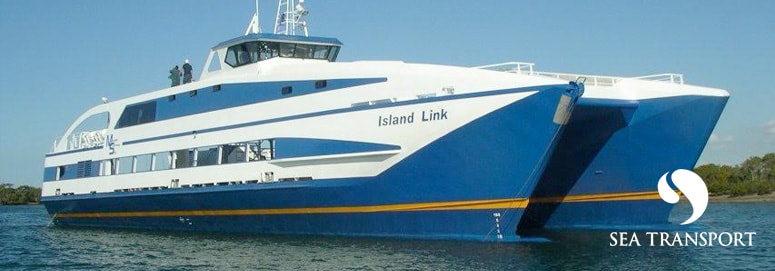
The conclusions found in Baird’s study were that:
- Efficiency: The catamaran was found to have a smaller block coefficient 1 and, due to significantly lower resistance, the catamaran requires less power to perform at the same speed and carrying capacity of a monohull.
- Motion Sickness Incidence: The catamaran was found to have an advantage over motion sickness thanks to its specifically designed shape which reduces the likelihood of slamming and rolling.
- Manoeuvrability and Seakeeping: The catamaran’s specific design features, such as its slender bow form and its widely spaced hulls result in a vessel that can operate both in tight areas and in adverse weather conditions. The monohull was found to have a much higher rate of cancellation due to weather and port size.
- Safety: The catamaran was found to have an advantage over the monohull with regards to its superior safety and evacuation features and its lower environmental impact.
- Cost: The comparison shows that the catamaran has a considerably reduced operating costs that its monohull competitor and is far less likely to experience cancellations due to environmental factors.
Dr. Baird’s comparison study concludes that medium-speed RO-PAX catamarans offer very good seakeeping, a greater manoeuvrability in port and overall lower operating costs than comparable monohull vessels, making them the ideal choice for operations in the medium-speed, medium-sized ferry sector.
1 the ratio of the volume of the displacement of a ship to that of a rectangular block having the same length, breadth, and draft.
At SEATRANSPORT our team of ferry operation consultants are experts in finding ferry solutions through our bankable feasibility studies and operations management services no matter the transport task and size. For more information on our ferry operation services , please click here . To view our ferry fleet , please click here .

SHIP DESIGN
Vessel fleet.
- Articles and Guides
Catamaran vs Monohull: The Great Sailboat Debate
16th jun 2023 by john burnham.

Do you love the natural sounds of water sliding past the boat’s hull and a breeze blowing across your rigging and sails while gliding ahead powered only by the force of the wind? If yes, you are well-suited to spending plenty of time on a sailboat, like so many generations of boat people before you.
But do you take your lead from the Egyptians who rigged sails on their boats built of reeds along the Nile River or follow the path of the Polynesians, who used an outrigger for extra stability and sailed from one Pacific island to the next in the earliest catamarans?
The question of which is better for sailing, one hull or two, has been a matter of debate over thousands of years. Today, let’s explore these two basic types of sailboat, and while we may not settle the argument once and for all, hopefully in the process you will begin to discover which option is better for you.
What Are the Differences Between Catamaran and Monohull Boats?
The monohull and the catamaran (often referred to as “cat”) are the two most common categories of sailboats, and of the two, the monohull far outnumbers the catamaran in popularity due to its simplicity and sturdiness. Advocates of the catamaran, however, are typically even more convinced than monohull sailors that their boats are best due to performance potential and overall spaciousness.
What are catamaran-style boats?
Catamarans are easily identified by their two-hull design. Two hulls sit side by side with an interconnecting deck or structural beams across the bap in the middle. Catamarans have been around since Pacific Islanders and other Austronesian people sailed them centuries ago, and they continue to gain popularity in a wide range of designs both as high-performance racing boats and ocean-cruising designs.
Although not part of this debate, a third sailboat type comparable to a catamaran is a trimaran. Trimaran sailboats are constructed similarly to catamarans but have three parallel hulls rather than two. Collectively, catamarans and trimarans are referred to as multihulls, and sailors of both types often refer lightheartedly to monohulls as “monomarans.”
What are monohull-style boats?
Monohull sailboats are the most common boat type because they feature a single hull, typically with a single mast and two sails. Rather than maintaining stability with a second hull creating a wider beam, monohull boats usually carry lead or other heavy ballast in their keel, or are stabilized by human weight as their crews lean out to counter the force of the wind. Monohulls can also be excellent racers and cruisers, depending on their size, volume, sail area, and displacement or weight.
Where Catamarans and Monohulls Excel
Each type of boat has its advantages, depending on what the owner wants in a boat. Here are the main advantages of each type.
Catamaran advantages
• More space . Catamarans have greater beam for a given length, which provides more space for the crew on a daysailer and larger living quarters on cruising designs, which are often laid out with berths in each hull and living quarters across the bridgedeck between hulls.
• Faster hull . If they are light enough, the sleeker shape and reduced wetted surface of two narrow, shallow hulls can produce quicker straight-line sailing speed than a single, deeper and wider hull.
• Comfort and stability . Two hulls provide better initial stability and generally heel less than monohulls, especially in light- or medium-strength winds and waves.
Monohull advantages
• Upwind sailing . When sailing against the wind, monohulls often sail at a closer angle to the wind and arrive more quickly at their destination.
• Easier motion . Heavier monohulls often have a slower, gentler motion in waves than a lighter catamaran.
• Load carrying capability . A monohull’s performance is reduced less than a catamaran’s when the boat is loaded heavily with cargo or crew.
• Righting characteristics . Larger monohulls have weighted keels that provide increased resistance to a capsize when the boat is heeled far over by wind or a wave and if capsized will return the boat to an upright position.

Catamaran vs. Monohull Sailing Speed
There are several reasons why a catamaran is often faster than a monohull boat. These include the fact that most catamaran hulls have less water resistance than monohulls, they are often lighter, and they can be more easily driven by a relatively small sailplan. At similar lengths, a catamaran can be dramatically faster than a monohull under similar sea conditions. However, weight is the enemy of a catamaran’s speed; a heavy or heavily loaded catamaran may be much slower than a lightweight monohull.
Catamaran vs. monohull power
A monohull under auxiliary power may be faster than a catamaran in certain conditions, like powering against a strong wind. In other wind and wave conditions, the catamaran is often faster. Also, with an engines on each hull, the cat is often much more maneuverable in close quarters or at the marina. While it may seem counter-intuitive, turning and controlling the boat is often less challenging than when sailing a monohull boat with the typical single engine. Monohull boats require more finesse when in tight quarters like berthing in a marina.
Catamaran vs. Monohull Efficiency
A sleek monohull may sail against the wind super efficiently, pointing close to the wind and making an excellent speed. However, the power-to-weight ratio of the catamaran allows it to make good use of whatever wind it has. Some fast, light catamarans can travel at speeds equal to or faster than the wind, something very few monohulls can achieve. When the wave action increases and you start sailing into the wind, the catamaran may lose its advantage, and in strong winds, the greater windage of the wide catamaran may have a pronounced slow-down effect compared to the sleeker monohull.
Catamaran vs. Monohull Stability
Despite not having a weighted keel, a catamaran design is able to avoid heeling over in strong winds or bad weather due to its greater width or beam. As a result, the multihull also tends to be more stable at anchor and any time in calmer seas. However, if the winds are strong and the waves are large, a monohull, with its keel weight and ability to sail against the wind while controlling the sails, is sometimes the steadier of the two types. While a monohull with weighted keel can be knocked down by strong gusts of wind, it will only capsize in extremely large waves. Likewise, a cruising catamaran can only capsize in large ocean waves, unless it is a fast, lightweight catamaran, that can more easily tip over in gusty winds and waves.
Catamaran vs. Monohull Safety
Power catamarans and power monohulls are relatively comparable in terms of safety. But depending on the size of the mast and sails, the weight of the boat, and the wind and wave conditions experienced, many sailors believe that a monohull configuration is safer than a catamaran for a sailboat. That’s mainly because while a monohull will initially heel over further in a strong gust of wind, the weight of its keel provides increasing stability as described above and if completely capsized, the keel typically helps the boat self rescue.
It should be clarified that many sailing catamaran designs are conservatively configured and difficult to capsize except in extreme ocean wave conditions—and the same can be said for larger power catamarans.
In terms of ultimate safety in the event of a capsize, however, the catamaran is considered safer because even should it turn once upside down, even if damaged, the catamaran with its two hulls and minimal ballast typically remains buoyant and provides a safer configuration in which to await rescue. By contrast, if a monohull’s hatches and port windows suffer damage in a knockdown, the boat can more quickly take on water and, weighed down by its keel or other ballast, be more difficult to keep afloat in extreme conditions.
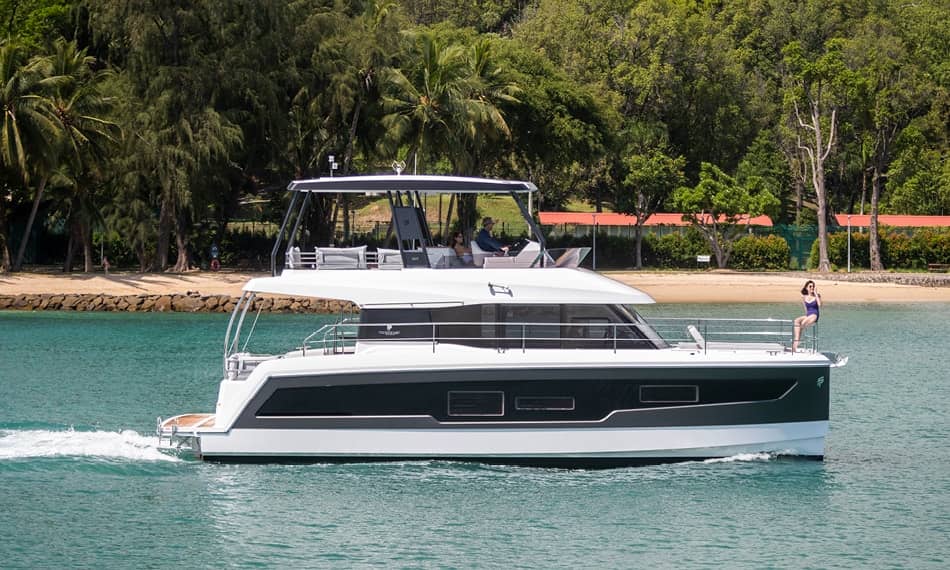
Photo credit: Fountaine Pajot
Monohull vs. Catamaran Maintenance
Depending on size, age, and type of hull construction, maintenance costs will vary, but when comparing two fiberglass sailboats of similar length, the catamaran typically costs more to maintain. That’s because there are two hulls to care for, two engines, connecting structures that align the two hulls, and an overall larger boat due to the catamaran’s greater beam. Hauling and launching a catamaran can be more expensive at many boatyards, as well.
However, smaller catamarans of about 20 feet in length or less are often more comparable and sometimes cheaper to maintain than a similar length monohull. That’s because cats are often lighter and suitable for keeping on a trailer rather than in a slip or on a mooring.
Catamaran vs. Monohull Cost
Compared to similar length monohulls, a catamaran will likely cost more than a monohull boat. That’s mainly because when you purchase a 40-foot catamaran, you are buying two hulls and two engines, but you are also buying a bigger boat that typically has much more volume. In the case of a 40-footer, you end up with a boat that has a large saloon and three or four private cabins, whereas in the monohull, the saloon is smaller and you’ll have three smaller sleeping cabins. Annual maintenance will also be greater, as described above.
Among smaller catamarans and monohulls, pricing will vary, and a lightweight beach cat may be less expensive than a heavier monohull keelboat of similar length.
Catamaran vs. Monohull, Pros and Cons
Depending on a variety of factors, there are plenty of catamaran and monohull pros and cons. These are some to keep in mind when comparing the two boat types.
Catamaran pros
• Comfort . On a cruising designed catamaran, two hulls with a wide beam create a stable and comfortable living environment with open spaces and plenty of standing room.
• Speed . Smaller, lighter catamarans are speed champions, especially in a moderate wind and modest waves. Cruising cats are often fast when sailing at reaching angles.
• Maneuverability . When equipped with two engines, a catamaran is highly maneuverable under power.
Monohull pros
• Upwind sailing . Although catamarans are often faster when sailing in a straight line, monohulls typically perform better against the wind.
• Self-righting . Except for unballasted monohulls that rely on crew weight for stability, the ballasted keel of a monohull prevents capsizing in most circumstances and the keel makes the boat self-righting.
• Maneuvering under sail . Monohulls turn more easily due to their shape, maneuvering in close quarters or tacking when sailing against the wind.
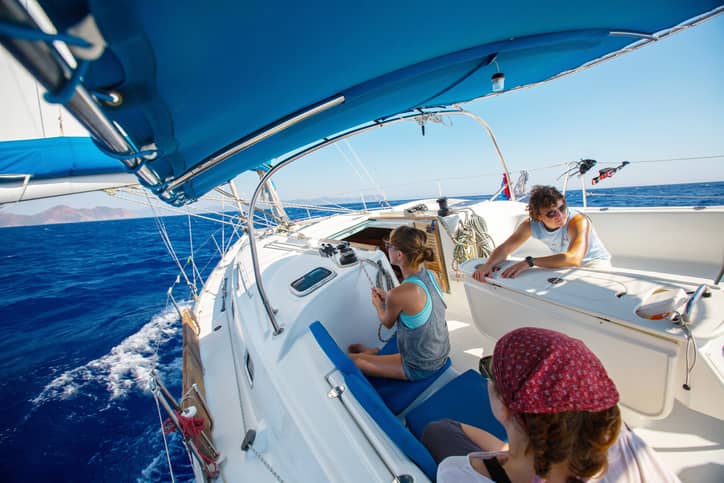
Catamaran cons
• Lack of feel when steering . Except in lighter, more performance-oriented catamarans, the broad platform with two rudders and two hulls sometimes isolates the sailor and provides little feedback through the helm when under sail.
• Sailing against the wind . Upwind sailing is generally not a catamaran’s best point of sail, but its straight-line speed can be such that it may arrive quickly at its destination, even though you will have traveled much farther than in a monohull.
• Pricing . Catamarans are typically more expensive than monohull boats due to their two hulls and other required build components and complexity.
• Not self-righting . Thanks to its wide beam and two-hull design, a catamaran is more difficult to flip, but it is not designed to right itself except for small beach cats where the crew can use their weight to re-right the boat.
Monohull cons
• Weight . Most monohulls have thousands of pounds of weight in the keel for ballast that is vital to its stability but can degrade performance.
• Wave motions . Monohull boats are much more susceptible to rolling wave motions.
• Cabin . With the monohull cruising design, you'll typically find a darker interior with smaller port windows and fewer space options.
• Heeling effect . Monohulls will heel over in a moderate wind, which is normal but often uncomfortable for newer sailors.
Written By: John Burnham
John Burnham is a marine editor and writer with decades of journalism experience as Chief Editor of boats.com, Sailing World, Cruising World, and other boating websites. As a competitive sailor, he has led teams to world and national titles in the International One-Design, Shields, and other classes. Based in Newport, Rhode Island, John is a PCC leadership coach, a member of the America’s Cup Hall of Fame Selection Committee, and a past board member of Sail America and US Sailing. For more, see johnsburnham.com .

More from: John Burnham
Related Articles and Guides
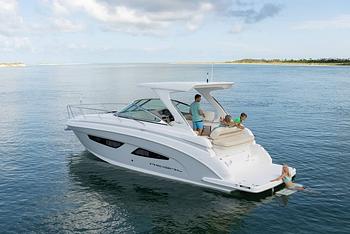
6th Sep 2024
The Best Mini Yacht Brands for Cruising and Luxury
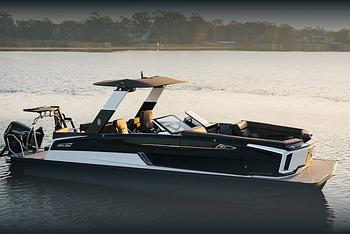
16th Aug 2024
Best Luxury Pontoon Boat Brands Have it All: Glamor, Speed, Fishing, Waterslides...
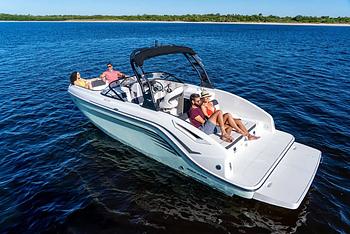
10th Aug 2024
Deck Boat vs. Bowrider: Which Runabout is Best?

19th Jul 2024
The World’s Best Yacht Brands

- Explore Rightboat
- Boats for Sale
- Boating Articles
- Buyers Guide
- About RightBoat
- Sell Your Boat
- Boat Selling Advice
- All manufacturers
- All categories
- Are you a broker/dealer?
- Learn more about the Rightboat:HUB
Enter your email to keep up to date with the latest news
Join for free
Sign up now for free and discover how easy it is to keep up to date with THE latest boats for sale. Find your right boat, and tailor your voyage to finding your next boat.
Benefits of becoming a member:
- Set up tailored alerts
- Personalise your experience
- Download full specifications and broker details
- Keep tabs on your favourite boats
Are you a broker? Join as a Broker
Rightboat - join for free.
Do you have an account already? Login
Save this search
Save your search and receive new boats in your email..
You can unsubscribe from your alerts whenever you like. By pressing the button you accept the Legal Terms and conditions
Filter/Sort
Subscribe to our newsletter.
Highlighted items are required
Crewboat and Fast Supply
Browse projects, 36m catamaran fast supply vessel, 33m monohull crewboat.
Three new Incat Crowther 33 crew boats that will serve as wellhead maintenance vessels for QatarEnergy in the Middle East
35m Catamaran CTV
A pair of environmentally friendly CTVs under construction for operation in the Hornsea Project 2 wind farm.
59m Fast Crew Supply Vessel
A fleet of 59m hard working rugged Fast Supply Vessels to operate in USA.
20m Catamaran Crew Transfer Vessel
A small catamaran crew transfer vessel with proven speed, robustness and seakeeping capabilities beyond its size.
25m Monohull Crewboat
This monohull crewboat provides transport for personnel and light cargo to and from a floating storage regasification unit (FSRU).
40m Monohull Crewboat
A 40m version of Incat Crowther's successful monohull crewboat series.
57m Catamaran Workboat
The latest in Seacor Marine's highly successful CrewZer Class of offshore vessel, offering exceptional efficiency, comfort and operational flexibility.
20m Catamaran Passenger Ferry
A fleet of vessels serving a natural gas plant in Nigeria, offering a combination of efficient hulls, rugged construction and simple layout.
57m Catamaran Crewboat
A fast, efficient crew transfer vessel that acts as cost efficient alternative to aviation transport. Recently deployed to Caspian Sea under the name Gara Garayev.
63m Monohull Crew Supply Vessel
Superior speed and performance in delivering crew and supplies to the offshore industry.
70m Catamaran Fast Crewboat
The Muslim Magomayev fast crew boat (FCB) is the world's biggest high-speed crew catamaran vessel, built primarily to carry crew to multiple offshore installations.
48m Monohull FSV
A fleet of hard working rugged Fast Supply Vessels to operate in Brazil.
20m Monohull Crewboat
A monohull crewboat with versatile forward cargo deck and bulletproof pilot house.
45m Monohull Crewboat
A 45m fast crewboat for oil field crew transfers.
36m Monohull Crewboat
The first of this type of vessel built by Cheoy Lee, Swissco Cheetah is the latest in a long line of collaborative efforts between builder and designer, including a large number of successful aluminium and composite passenger vessels.
30m Monohull Crewboat
A simple and robust fast crewboat for oil field crew transfers.
28m Wave Piercing Catamaran Crewboat
A new interpretation of the Wave Piercer concept for use in offshore energy installations. Highly functional, stable, safe and efficient platform.
60m Monohull Crewboat
Three new ABS-Classed monohull fast support intervention vessels offering efficient and safe transport of cargo, heavy maintenance equipment and personnel.

IMAGES
VIDEO
COMMENTS
Catamarans range in size from small sailing or rowing vessels to large naval ships and roll-on/roll-off car ferries. The structure connecting a catamaran's two hulls ranges from a simple frame strung with webbing to support the crew to a bridging superstructure incorporating extensive cabin and/or cargo space.
Speed and Efficiency. Power catamarans have gained popularity for offering a unique combination of speed, efficiency, and stability. Their dual-hull design allows for less water resistance, which directly translates to higher speeds and better fuel efficiency compared to traditional monohull boats.. In addition, the wide beam provided by the two hulls ensures a stable ride even at higher speeds.
Accessible: contrary to received ideas, transport by cargo ship is not only reserved for superyacht owners. Today, the transport budget for a 40-foot catamaran to cross the Atlantic is around 15,000 euros, including all expenses - a cost comparable to that of a delivery by a professional crew, minus the sailing risks, the fuel consumed and ...
Sailcargo Inc. is a pioneering clean shipping company. We construct and operate a world-leading fleet of zero emission cargo ships at our green shipyard in Costa Rica. We are a Costa Rican company supported by international investors that share our vision for using clean energy. We believe that while the world changes, it is our responsibility ...
August 23, 2024. Catamarans are boats with two connected hulls that are joined by a bridge. Because they are faster, more stable, and capable of carrying larger cargo than their monohull counterparts, catamarans are growing in popularity. Contents show.
Built in compliance to RINA class rules, Hydromover is a catamaran fitted with swappable batteries and space for up to 25 tonnes of cargo. The battery technology provided by Shift Clean Energy generates zero emissions and can potentially reduce operational costs by up to 50 per cent compared to conventional vessels due to improved energy efficiency and lower maintenance costs.
The cargo decks are completely and quickly self-draining. Their designs are a simple concept. All cargo, both containerised and Ro-Ro, is carried on the main deck so the hulls remain essentially sealed for floatation purposes. No cargo need be carried in the hulls that are reserved for machinery, fuel, water and crew accommodation.
Designed with a keen focus on offshore adventures, the 3814-CTC features a purpose- built starboard walkaround, elevating the overall boating experience. With a hull length of 41 feet and a beam ...
docking for catamarans over 140-foot in breadth will require new facili-ties or extensive modification to existing facilities. Scantlings of a 1000-foot catamaran cargo liner can be expected to be within current shipbuilding capabilities. The uniqueness of the catamaran design lies in the cross-structure and the important facets of the cross ...
A 235' composite sailing catamaran container ship proposal. I designed this 235' sailing catamaran container ship for a group who wanted to be able to reach south Pacific islands with an economical, shallow draft vessel. Capacity would be 40 containers. Draft is 6' for the hulls. The masts would have electric control and cameras linked to the ...
Cargo Ship pricing. Cargo Ship listed for sale on YachtWorld offers a diverse price range, from $40,000 on the relatively lower-priced, classic models to a stunning $9,500,000 for the most unique, bespoke yachts available. It is important to take into consideration the expenses associated with ownership when evaluating your budget and the ...
The cost of a catamaran boat can vary widely depending on factors such as size, age, and brand. On average, a new catamaran boat can cost anywhere from $150,000 to $1 million or more. Used catamarans can be found for significantly less, but it is important to factor in the cost of any necessary repairs or upgrades.
Catamarans and monohulls are two vessels that have distinct features from each other. Catamarans have two hulls connected by a bridge structure whereas, as ... A Fourth Engineer on cargo ships oversees engine room operations, machinery maintenance, and ensures compliance with regulations like MARPOL. Read more. The Quality Control Process in ...
The Spearhead-class expeditionary fast transport (EPF) is a United States Navy-led shipbuilding program to provide a high-speed, shallow draft vessel intended for rapid intra-theater transport of medium-sized cargo payloads. The EPFs can reach speeds of 35-45 knots (65-83 km/h; 40-52 mph), and allow the rapid transit and deployment of conventional or special forces, equipment and supplies.
HSV-2 Swift is a hybrid catamaran.She was privately owned and operated by Sealift Inc., and was originally built under the JHSV program as a proof of concept.As part of this program, she was directly leased for evaluation from her builders by the United States Navy Military Sealift Command from 2003 to 2013, primarily as a mine countermeasures and sea basing test platform.
Catamarans are faster than monohulls of the same length and displacement, but monohulls are stronger and more spacious. ... Virtually every cargo and container ship, warship, and many passenger ships are monohulls due to their strength, ease of construction, and high cargo capacity. Are Monohull Sailboats More Common?
Some famous builders are Robertson and Caine, Lagoon, Seawind, Fountaine Pajot, Gemini and Leopard. They make catamarans with secondary inboard, outboard, electric and other propulsion systems in diesel, gas, and other fuel systems. Custom-made catamaran sailing vessels are a speciality of the Privilege Shipyard.
The catamaran's specific design features, such as its slender bow form and its widely spaced hulls result in a vessel that can operate both in tight areas and in adverse weather conditions. The monohull was found to have a much higher rate of cancellation due to weather and port size. Safety:
Public Affairs. 471 East C St. Norfolk, VA 23511-2419. Public Affairs. (757) 443-2839. The Expeditionary Fast Transport (EPF) is a shallow draft, all aluminum, commercial-based catamaran capable ...
Austal are now approaching completion of their next generation trimaran, the Auto Express 102. Now in week 18 of construction, the 102 meter boat is due to launch in October. The bald facts are ...
Get Some Wedge Gang Merch: https://scrapman.store/Use Promo Code "WEDGE" for 15% off ALL MERCH this month.Welcome to another episode of Trailmakers! Today I ...
Catamaran vs. monohull power. A monohull under auxiliary power may be faster than a catamaran in certain conditions, like powering against a strong wind. In other wind and wave conditions, the catamaran is often faster. Also, with an engines on each hull, the cat is often much more maneuverable in close quarters or at the marina.
57m Catamaran Crewboat. Design Number:ICO13092. Vessel Name:Gara Garayev Ex: Pacific Kestrel. A fast, efficient crew transfer vessel that acts as cost efficient alternative to aviation transport. Recently deployed to Caspian Sea under the name Gara Garayev. Full Profile.